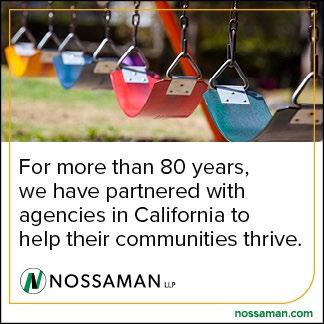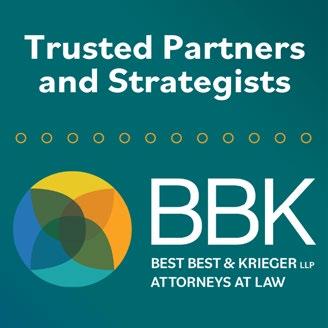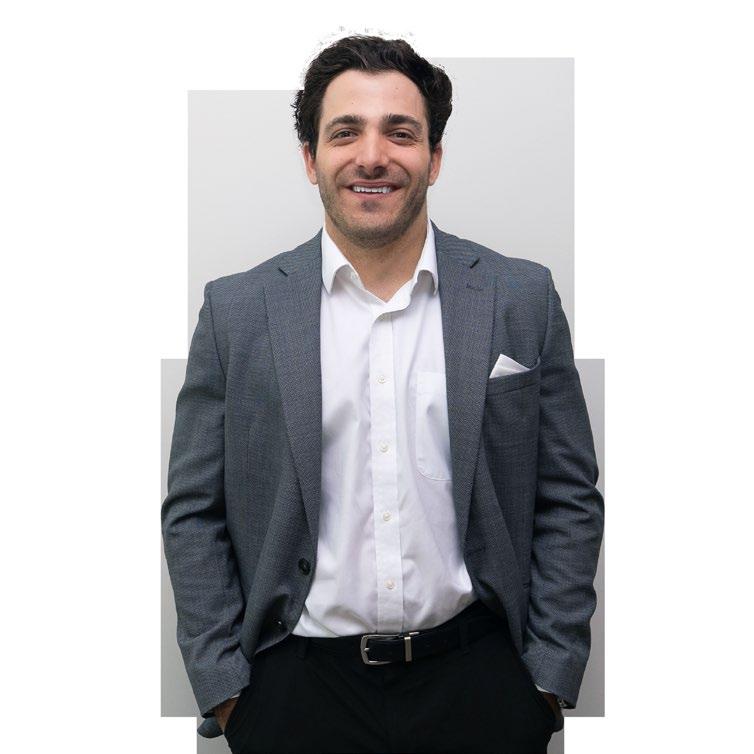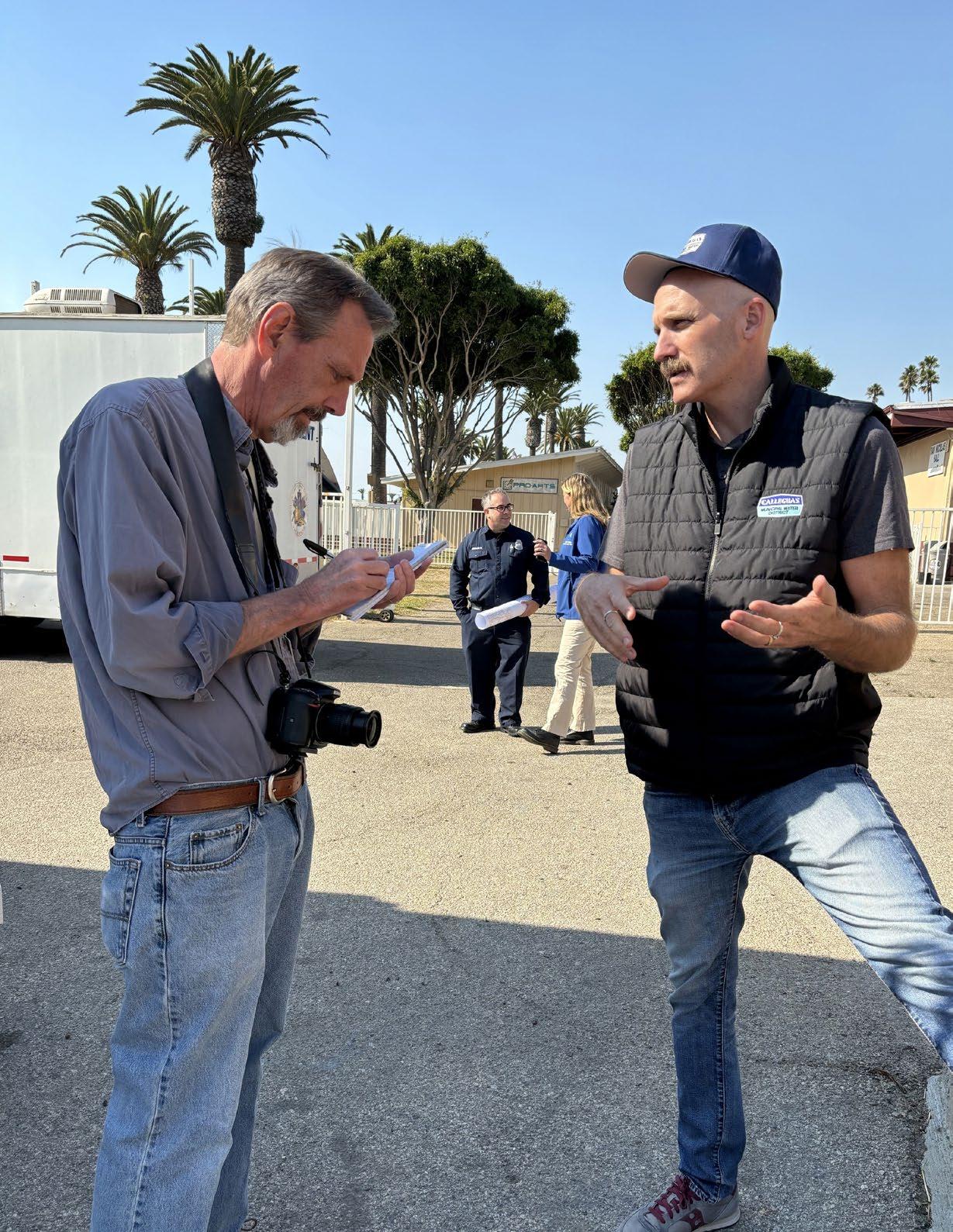
Paint the Parks: A CommunityDriven Solution Transforming Public Spaces
Page 19 What’s So Special ACT with Purpose: Honoring Our Ideals, Educating Our Citizens, Inspiring Future Leaders
Page 32


Paint the Parks: A CommunityDriven Solution Transforming Public Spaces
Page 19 What’s So Special ACT with Purpose: Honoring Our Ideals, Educating Our Citizens, Inspiring Future Leaders
Page 32
The California Special Districts Alliance is a collaborative partnership between the California Special Districts Association (CSDA), the CSDA Finance Corporation (CSDAFC), and the Special District Risk Management Authority (SDRMA). These three highly respected statewide organizations join forces to help special districts in California better serve their communities.
PETER KAMPA, CSDM, PRESIDENT, Groveland Community Services District
LORENZO RIOS, CSDM, VICE PRESIDENT, Clovis Veterans Memorial District
ANTONIO MARTINEZ, SECRETARY, Contra Costa Water District
DON BARTZ, CSDM, TREASURER, Phelan Pinon Hills Community Services District
ELAINE MAGNER, PAST PRESIDENT, Pleasant Valley Recreation and Park District
RYAN CLAUSNITZER, CSDM, Alameda County Mosquito Abatement District
SCOTT DUFFIELD, CSDM, Heritage Ranch Community Services District
VINCENT FERRANTE, Moss Landing Harbor District
JERRY L. GILMORE, Truckee Sanitary District
CURTIS JORRITSMA, Hilmar County Water District
JO MACKENZIE, Vista Irrigation District
NOELLE MATTOCK, El Dorado Hills Community Services District
GREG P. ORSINI, McKinleyville Community Services District
PATRICK OSTLY, North of River Sanitary District #1
FRED RYNESS, Burney Water District
KIM SENEY, Gold Mountain Community Services District
KATHRYN SLATER-CARTER, San Mateo County Harbor District
STAFF
NEIL MCCORMICK, Chief Executive Officer
MEGAN HEMMING, Chief Professional Development Officer
MUSTAFA HESSABI, Chief Counsel
KYLE PACKHAM, Chief Advocacy & External Affairs Officer
CASSANDRA STRAWN, Chief Member Services & Communications Officer
RICK WOOD, Chief Finance & Operations Officer
TOMICKO ABELLA, Member Services Representative
AARON AVERY, Director of State Legislative Affairs
ANNA C. STAGG, Legislative Assistant
EMILY CHA, Database & Online Communities Specialist
MARCUS DETWILER, Legislative Representative
BRENT FARRAR, Design & Websites Manager
AUBREY GOHL, Member Services Representative
JOSE GUERRERO, Graphic Design/Video Specialist
COLLEEN HALEY, Public Affairs Field Coordinator
CASSIE HASKINS, Member Services Representative
LILIA M. HERNANDEZ, Associate Legislative Analyst
MORGAN LESKODY, Communications Specialist
MICHAEL MEYER, Senior Member Services Specialist
CHRIS NORDEN, Public Affairs Field Coordinator
RICHELLE NOROYAN, Public Affairs Field Coordinator
CHRIS PALMER, Senior Public Affairs Field Coordinator
AMBER PHELEN, Management Analyst
RACHAEL POPPINO, Professional Development Coordinator
OLIVIA ROBERTSON, Member Services Specialist
JENNIFER SMITH, Professional Development Coordinator
OPHELIA SZIGETI, Legislative Analyst
ANTHONY TANNEHILL, Legislative Representative
ERASMO VIVEROS, Public Affairs Field Coordinator
DANE WADLÉ, Senior Public Affairs Field Coordinator
KRISTIN WITHROW, Communications Specialist
SANDY SEIFERT-RAFFELSON, PRESIDENT, Herlong Public Utility District
ROBERT SWAN, VICE PRESIDENT, Groveland Community Services District
JESSE CLAYPOOL, SECRETARY,
Honey Lake Valley Resource Conservation District
MEMBERS OF THE BOARD
ROBERT HOUSLEY, CSDM, Midway City Sanitary District
MIKE SCHEAFER, Costa Mesa Sanitary District
TIM UNRUH, CSDM, Kern County Mosquito & Vector Control District
THOMAS WRIGHT, Clovis Veterans Memorial District
MICHAEL KRONBETTER, Public Financial Management
DEREK BURKHALTER, Bickmore Actuarial
MICHAEL BLOSS, River City Bank
CHRIS WIEGMAN, GroupOne
ANN SIPRELLE, Best Best & Krieger, LLP
KARL SNEARER, Apex Insurance Agency
DOUG WOZNIAK, Alliant Insurance Services, Inc.
STAFF
DEBBIE YOKOTA, CPCU, Interim Chief Executive Officer
MATT CLUTTERBUCK, CPA, MBA, Chief Financial Officer
ENRIQUETA CASTRO, CSP, Interim Chief Risk Officer
WENDY TUCKER, AU, Underwriting/Program Manager
ALANA LITTLE, Health Benefits Manager
DANNY PEÑA, SIP, WCCP, Workers’ Compensation Claims Manager
ROBERTO LOZANO, Liability Claims Manager
PETR KOVALCHUK, CPA, Finance Manager
JASON THORN, Data Architect
MARGARITO CRUZ, Senior Accountant
ERIC LUCERO, ARM, Senior Risk Control Specialist
GUILLERMO DE LA TORRE, Senior Risk Control Specialist
TAMARA BAKKIE, SIP, WCCA, Senior Workers’ Compensation
Claims Examiner
JOHN PESHKOFF, SIP, WCCA, Senior Workers’ Compensation
Claims Examiner
MARTHA WARREN, SIP, WCCA, Senior Workers’ Compensation
Claims Examiner
MICHELLE BROWN, Health Benefits Specialist II
TERESA GUILLEN, Program Specialist II
KEITH IKAMI, Liability Claims Examiner II
LISA SANDOVAL, Member Services Specialist I
CANDICE RICHARDSON, Management Analyst
MARIETTA HARRISON, SIP, WCCA, Future Medical Claims Examiner
CHER DARLING, Workers’ Compensation Claims Assistant
LILLI VINN, Accounting Technician
KOJI LO, Liability Claims Examiner I
AMY SUTHERLIN, Underwriting and Program Manager
CAMREN BUTLER, Program Specialist II
Special District Risk Management Authority
1112 I Street, Suite 300 Sacramento, CA 95814
tel: 800.537.7790 www.sdrma.org
CSDAFC Board and Staff
OFFICERS
JO MACKENZIE, PRESIDENT, Vista Irrigation District
VINCE FERRANTE, VICE PRESIDENT, Moss Landing Harbor District
ELAINE MAGNER, CSDM, SECRETARY,, Pleasant Valley Recreation and Park District
GREG P. ORSINI, TREASURER, McKinleyville Community Services District
MEMBERS OF THE BOARD
RONALD COATS, DIRECTOR, East Valley Water District
GLENN LAZOF, Regional Government Services Authority
CONSULTANTS
RICK BRANDIS, Brandis Tallman, a Division of Oppenheimer & Co. Inc.
JEFF LAND Brandis Tallman, a Division of Oppenheimer & Co. Inc.
STEFAN MORTON, Municipal Finance Corporation
WILLIAM MORTON, Municipal Finance Corporation
ALBERT REYES, Kutak Rock LLP
DMITRY SEMENOV, Ridgeline Municipal Strategies, Consultant to the Working Capital Financing Program
NICOLE TALLMAN, Brandis Tallman, a Division of Oppenheimer & Co. Inc.
STAFF
NEIL MCCORMICK, Chief Executive Officer
DAVID MCMURCHIE, Legal Counsel
MICHAEL MEYER, Senior Member Services Specialist
AMBER PHELEN, Management Analyst
RICK WOOD, Chief Finance & Operations Officer
CSDA Finance Corporation 1112 I Street, Suite 200, Sacramento, CA 95814 tel: 877.924.2732 www.csdafinance.net
For editorial or advertising inquiries: Phone - 877.924.2732 Email - membership@csda.net
California Special Districts Association 1112 I Street, Suite 200 Sacramento, CA 95814 toll-free: 877.924.2732 www.csda.net
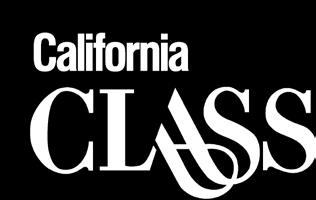









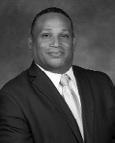

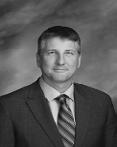



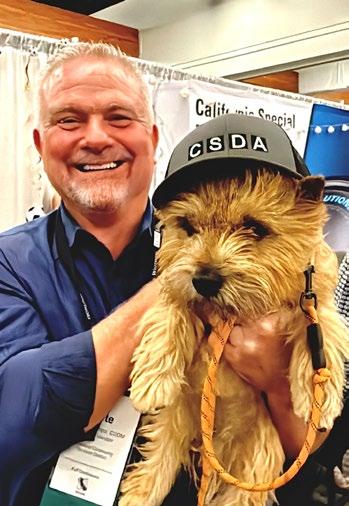
Happy Fall! As the leaves turn and we approach the final chapters of this year, it’s the perfect moment to reflect on how far we’ve come and reignite our passion for the work still ahead. In every season of change, there’s opportunity. And across California’s special districts, we continue to seize that opportunity with courage, creativity, and a deep commitment to public service.
Thank you to all who have participated in a CSDA conference this year. These events are more than professional gatherings—they are powerful reminders of our shared mission and the strength we gain through connection. When we come together, we inspire one another.
If you haven’t yet joined us, there’s still time. Don’t miss our remaining 2025 events, including the Board Secretary/Clerk Conference and a final Special District Leadership Academy in Monterey.
In that same spirit of collaboration, I’m pleased to recognize and welcome the incoming 2026 CSDA Board of Directors. Many of our Directors are continuing their service, and we’re grateful for their steadfast leadership:
• Ryan Clausnitzer, CSDM, Alameda County Mosquito Abatement District
• Lorenzo Rios, CSDM, Clovis Veterans Memorial District
• Scott Duffield, CSDM, Heritage Ranch Community Services District
• Don Bartz, CSDM, Phelan Pinon Hills Community Services District
We also extend a warm welcome to our newest Directors:
• Kevin Phillips, Paradise Irrigation District
• Steve Palmer, CSDM, Donner Summit Public Utilities District
Together, this team brings an exceptional depth of knowledge, energy, and vision. The future of CSDA is bright under such dedicated leadership. This issue of California Special Districts magazine is a celebration of innovation in action. Inside, you’ll find stories that prove what’s possible when dedication meets creativity:
• Calleguas Municipal Water District, responding to disaster with bold, transparent outreach
• Ross Valley Sanitary District, educating the public to protect the environment
• North Highlands Recreation and Park District, transforming graffiti into community pride through art
• Beaumont-Cherry Valley Water District, building a tech-forward future that models efficiency and service
These districts don’t just meet expectations, they redefine them. They’re a powerful reminder that excellence in public service is not just a goal, but a daily commitment. And when we lead with integrity, purpose, and heart, we inspire others to do the same.
Let’s carry this momentum forward!
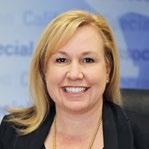
The California Special Districts Association is thrilled to announce that our own Chief Professional Development Officer, Megan Hemming, has been appointed Chair of the Board of Directors at Associations West (formerly CalSAE). As the first chairperson under the newly expanded Associations West brand—serving California, Oregon, and Nevada— Megan brings exceptional leadership and expertise to the role. Associations West provides education, resources and a collaborative community for association professionals.
CSDA is proud to support Megan as she expands her influence to foster collaboration and professional growth across multiple states.
Special District Leadership Academy (SDLA) 2025 November 16–19, 2025 (Seaside/Monterey, CA)
CSDA’s Special District Leadership Academy (SDLA) returns to Monterey this fall, offering board members and staff a focused, curriculum-based opportunity to strengthen their governance skills. Designed for both new and experienced leaders, the Academy covers four core modules:
• Governance Foundations
• Setting Direction
• Board’s Role in Human Resources
• Board’s Role in Finance and Fiscal Accountability
SDLA provides a dedicated space to gain practical tools for effective leadership. Participants will explore strategies to foster collaboration, clarify roles, and build a strong foundation for their district’s success.
For more information visit sdla.csda.net
Jim Markman
Roxanne Diaz
Ginetta Giovinco
Craig Steele
Dave Fleishman
Representing California public agencies for over 70 years.



Exceptional Public Outreach & Advocacy AwardLarge District
Calleguas Municipal Water District
Exceptional Public Outreach & Advocacy AwardSmall District
Ross Valley Sanitary District
Innovative Program of the Year Award - Large District
Ventura County Fire Protection District
Innovative Project of the Year Award - Small District
North Highlands Recreation and Park District
Excellence in Technology Award
Beaumont-Cherry Valley Water District
Chapter of the Year Award
Special Districts Association of North Los Angeles County
Staff Member of the Year Award
Kaitlin Tran, Costa Mesa Sanitary District
Board Member of the Year Award
Sandra Rose, Monte Vista Water District
General Manager of the Year Award
Sean Barclay, Tahoe City Public Utility District
Ralph Heim Exceptional Outreach & Advocacy Award
Scott Sear, Desert Recreation District
NORTHERN NETWORK
Kevin Phillips, General Manager, Paradise Irrigation District
SIERRA NETWORK
Steve Palmer, CSDM, General Manager, Donner Summit Public Utilities District
BAY AREA NETWORK
Ryan Clausnitzer, CSDM, General Manager, Alameda County Mosquito Abatement District
CENTRAL NETWORK
Lorenzo Rios, CSDM, Chief Executive Officer, Clovis Veterans Memorial District
COASTAL NETWORK
Scott Duffield, CSDM, General Manager, Heritage Ranch Community Services District
SOUTHERN NETWORK
Don Bartz, CSDM, General Manager, Phelan Pinon Hills Community Services District
This is your chance to get involved with CSDA! Expert Feedback Teams allow CSDA to quickly and effectively gauge the impact new laws may have on special districts. If you have firsthand experience in one or more of the areas below, please join a CSDA’s Expert Feedback Team.
Teams include: Environment, Revenue, Formation and Reorganization, Governance, Human Resources and Personnel, Public Works and Facilities, and Legal. Email membership@csda.net to learn more.
The 2025 General Manager Leadership Summit brought district leaders together for three days of strategic learning, networking, and inspiration at the Everline Resort in Olympic Valley.
With engaging sessions, powerful keynotes, and meaningful connection, this year’s Summit empowered attendees to navigate today’s challenges with insight and innovation. Jon Petz kicked off the main event with his dynamic keynote, #HashtagWorthy Leadership, focused on creating moments of meaning and building trust through authentic leadership. A second keynote from Beth Z, Your Nerdy Best Friend, explored practical ways districts can adopt AI tools to boost productivity while staying grounded in ethics and security.
Throughout the Summit, breakout sessions tackled timely topics including federal grant strategy, reorganization case studies, organizational culture, generational leadership,

performance evaluations, and digital transformation. Attendees walked away with actionable ideas and new peer connections to bring back to their districts.
thanks to this year’s sponsors, whose support made this event possible:
California CLASS, California Special Districts Alliance, Centrica Business Solutions, CPS HR Consulting, ENGIE Services U.S., Five Star Bank, Liebert Cassidy Whitmore, Special District Leadership Foundation, Special District Risk Management Authority, Streamline, TriCounties Bank, and Umpqua Bank.
With unmatched content, collaboration, and a stunning mountain backdrop, the GM Leadership Summit continues to be CSDA’s flagship leadership event for California’s special district executives.
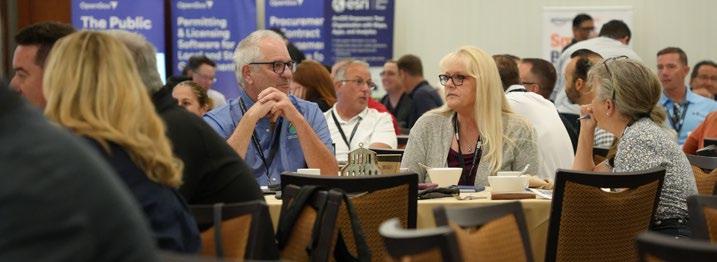
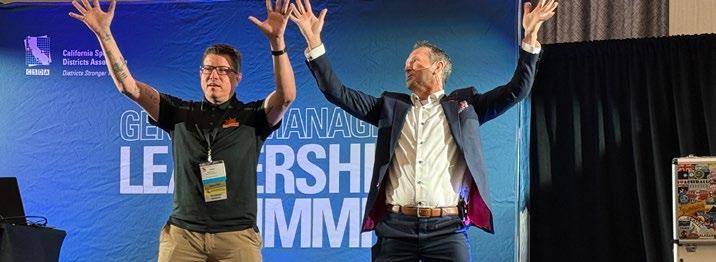
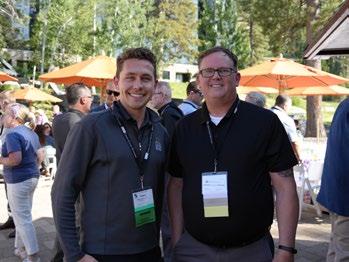
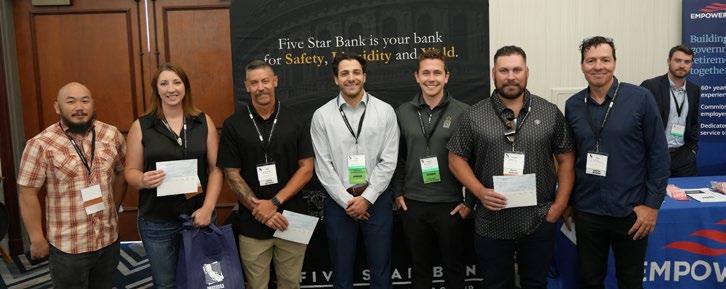
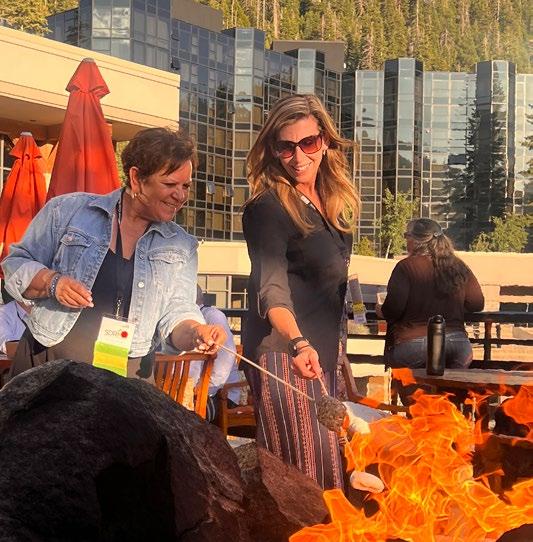
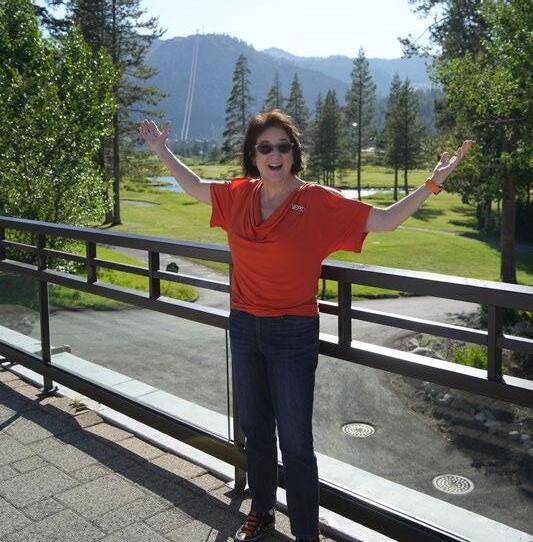
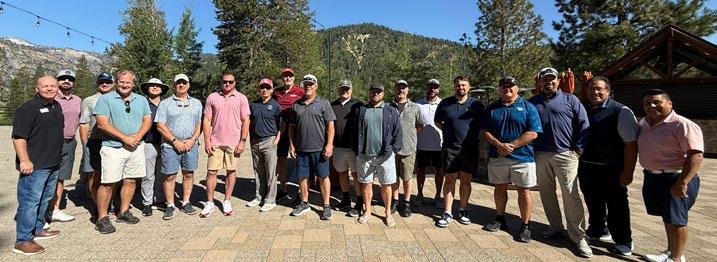
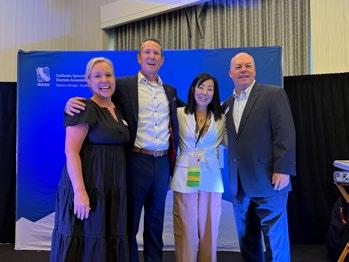
SDRMA Spring Education Day
March 18, 2026, Sacramento
Special Districts Legislative Days
April 7-8, 2026, Sacramento
SDLA South
May 11 – 14, 2026, San Diego
General Manager Leadership Summit
June 28-30, 2026, Newport Beach
SDLA North
July 19 – 22, 2026, San Rafael
CSDA Annual Conference & Exhibitor Showcase
August 25 - 27, 2026, Palm Desert
SDLA Coastal
September 13 – 16, 2026, San Luis Obispo
Board Secretary/Clerk
November 3 – 5, 2026, Santa Barbara
In-Person Workshop: Overview of Special District Laws
Nov 3, 2025 from 9:00 AM to 4:00 PM

Virtual Workshop: Financial Management for Special Districts
Nov 5-6, 2025 from 9:00 AM to 12:00 PM
Virtual Workshop: Leadership Lessons with Human Resource Professionals
Nov 7, 2025 from 2:00 PM to 3:00 PM
Virtual Workshop: Supervisory Skills for the Public Sector
Nov 12-13, 2025 from 9:00 AM to 12:00 PM
Virtual Workshop: SDLA Module 4 Board’s Role in Human Resources
Dec 3-4, 2025 from 9:00 AM to 12:00 PM
Accommodating Mental Health DisabilitiesStrategies for Success
Nov 4, from 10:00 AM - 11:00 AM
General Manager Evaluations: A Strategic Approach
Dec 2, from 10:00 AM - 12:00 PM
Cybersecurity Checklist for Special Districts
Dec 9, from 1:00 PM - 2:00 PM

To view more details and to register for conferences, events, workshops or webinars go to the CSDA Events Page https://qrco.de/bddc8t
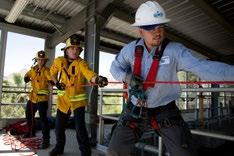

CSDA launched a portal for members to submit your success stories, press releases, news, and more for consideration in our digital and print publications. Have some eye-catching photos you’d like to share? We’d love those, too!

By Michelle Little, Director, Witt O’Brien’s | Ambipar
In the past several years, the grants landscape has looked different than before. Initially, this was due to the volume of COVID funding and the increase in grant funding opportunities approved under the Bipartisan Infrastructure Law/Infrastructure Investment and Jobs Act. In more recent months, it has looked different yet again—we’ve witnessed cancelled funding opportunities (e.g. BRIC in April), revised Notice of Funding Opportunities with certain components stricken from existence (e.g. RAISE became BUILD, and equity, climate change, and sustainability was removed), and abbreviated timelines for grants to be submitted. Some recent applications have a two-week turnaround, including several Department of Homeland Security Grant Opportunities that were released August 1st with an August 15th deadline. Thus, it is more imperative than ever to be ready to make your pursuance determination, block off your calendar to write and submit the grant application, and prepare to take on funding should you be awarded.
In March, my colleague Jason Sirney and I delivered a webinar for the California Special District Association on Grant Funding Readiness and Continuity Planning for Essential Services. We shared best practices for grant preparedness following the devastating wildfires in Los Angeles. I emphasized the importance of determining “Are you Grant Ready” early and being prepared for potential awards. Given the recent changes in the grants landscape, implementing these recommended best practices is crucial.
Special districts have unique requirements from traditional government agencies, with different operating structures, stakeholders, and governing regulatory bodies. Furthermore, you may not always be able to access the same funding streams and have different bonding and borrowing requirements and opportunities for braiding grant funding. Developing a grants management plan will ensure you can meet your district’s specific needs while pursuing funding for priority projects.
• Identify the type of funding desired, or funding above or below a certain dollar amount – you can build this into your grants management plan and practice.
• Be sure to start your preparation early. Look at what is on your list from prior years that you could not fund and leverage any Plan that was developed, including cost estimates, community engagement feedback, Board or Council summaries, and letters of support. Keep this file ready to use for applications, especially if the turnaround time has been abbreviated.
• Know what you are eligible to apply for and the nuances that come with Federal, State, and local sources.
• Pay attention to deadlines and due dates and work backwards from there
Understand there are a lot of requirements that come with taking on government funding. Always make sure you adhere to the most stringent requirement and implement this from the onset.
Ensure your Policies and Procedures are up-to-date
• Practice strong internal controls
• Properly maintain your financial records
• Make sure you’ve reviewed your prior audits and remedied any weaknesses
Understand the scope of work and effort required to implement and manage the funding if your application is successful.
• Know the skills required for grant delivery. If you have a skill gap, consider hiring resources and requesting training and technical assistance.
• Know your “infrastructure” for success, invest in effective systems, and reassess and update regularly to maintain a sustainable grant program.

Lastly, leverage networks, subscribe to listservs, sign up for funding alerts, and talk to your partners, including those from CSDA. Each week, CSDA publishes a list of available grants in their CSDA eNews available to all members.
Building a strong grant program takes time, but each step prepares you for your next application.
Michelle is a Director at Witt O’Brien’s | Ambipar with nearly two decades of experience in disaster recovery. She holds a Master’s degree in Urban and Regional Planning (MURP) and supports numerous clients across California, including special districts. Her family has been in Los Angeles for nearly a century, resulting in her deep connection to the region and unique passion for California.

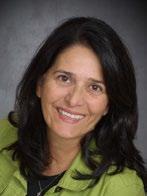
Anastasia Efstathiu
VP, Relationship Manager 916-774-3923
AnastasiaEfstathiu @ColumbiaBank.com
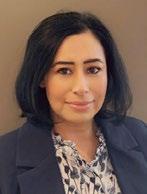
Baldeep Atwal
VP, Commercial Card Sales Consultant Global Payments & Deposits 916-742-0942
BaldeepAtwal@ColumbiaBank.com

The Western Riverside Council of Governments (WRCOG) has announced the selection of Brenda Dennstedt, Director at Western Municipal Water District, as Chair of its 2026 Executive Committee. “I am honored to serve as Chair of WRCOG and to represent a region that leads with collaboration and innovation,” said Dennstedt. “As we face new challenges and opportunities, I look forward to working alongside our members to strengthen our communities through strategic investments in infrastructure, energy, and sustainability.”

Citrus Heights Water District (CHWD) has appointed Todd Jordan to Director of Operations. With over two decades of experience in water utility management and engineering, Jordan brings deep technical expertise and leadership to this critical role. Since joining CHWD in 2023, Jordan has proven to be a key asset to the district. “It’s an honor to work with such a forward-thinking team at CHWD,” Jordan said. “I look forward to continuing to support the district’s mission of providing highquality, reliable water service to the community.”

The California Water Environment Association recently recognized Bryan Stewart, Management Analyst at Santa Margarita Water District (SMWD), as the 2025 Emerging Leader of the Year. Stewart’s strategic mindset and strong interpersonal skills have enhanced SMWD’s operational efficiency and continue to drive innovation within the district. Bryan noted, “I am truly honored to receive this award and could not have done it without the support and collaboration of the exceptional team here at SMWD.”

The El Dorado Irrigation District (EID) Board of Directors is pleased to announce the appointment of Pravani Vandeyar as the district’s new General Manager. Vandeyar brings nearly 20 years of experience in the water utility sector, with a strong record of operational leadership, regulatory compliance, and customerfocused service delivery.

The Desert Recreation District is proud to announce the promotion of Troy Strange from Director of Planning & Public Works to Assistant
General Manager. Strange brings over a decade of leadership experience at the district, having overseen capital improvement projects and infrastructure development to meet the growing needs of the community.
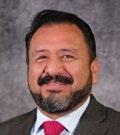
The San Gabriel Valley Municipal Water District Board of Directors has announced the appointment of Jose Reynoso as the District’s new General Manager. “Jose is a highly respected leader with a deep understanding of both municipal operations and water systems,” said Board President Dr. Steve Placido. “His regional experience and collaborative approach make him well-suited to continue the district’s mission in providing imported supplemental water to its member cities.”

Camarillo Health Care District’s retiring CEO Kara Ralston welcomed incoming CEO Blair Barker, CSDM, MPH in the district’s summer newsletter. The two leaders worked together at the district for 12 years. In acceptance, Barker shared, “What an honor it is to help care deeply for this community as the next Chief Executive Officer!”

By Greg Johnson, Chief Information Security Officer, VC3
Cybersecurity isn’t just an IT issue – it’s everyone’s responsibility. For special districts, where one wrong click can lead to a data breach or operational shutdown, ongoing security awareness is critical.
Rather than relying on once-a-year training, forwardthinking districts build a culture of continuous learning through:
• Short monthly awareness videos focused on an important topic (such as strong passwords) and reinforced with quizzes.
• Simulated phishing attack emails to gauge the vulnerability of your staff to social engineering tricks.
• Education around specific policy-related topics such
as multifactor authentication (MFA), regular password changes, and acceptable use. (Don’t just assume employees have read and understood a cybersecurity policy).
With free or low-cost security awareness training tools that are easy to implement, you can help your staff recognize threats and build better instincts over time – reducing the risk of human error and reinforcing your special district’s commitment to protecting sensitive data and systems.
Reach out to CSDA’s cybersecurity and technology services endorsed provider, VC3, to learn more about ways to keep your district safe and secure.

By Tom Scaglione, MBA, CPA, Chief Administrative Officer, Grossmont Healthcare District
Abraham Lincoln is widely regarded as the greatest president in United States history. Yet during his presidency he was likely the most hated president. Southerners considered him a tyrant and a threat to states’ rights and slavery. Northerners despised his stretch of executive powers and repeated war-time violations of the Constitution. Abolitionists considered him slow and noncommittal, particularly during the beginning of his presidency.
Lincoln was not deterred by how he was perceived. His focus was on character, not reputation, as evidenced by his famous quote: “Character is like a tree, and reputation like its shadow. The shadow is what we think of it; the tree is the real thing.”
Several years ago, a political club was having a hard time encouraging their members to run for special district
boards. There was apprehension, not knowing what it takes to be an effective board member. The club invited me to speak on the topic and demystify public service.
To prepare, I thought of how Lincoln was undeterred by perceptions, and focused on perseverance and the character traits that made his legacy endure as the greatest public servant ever - honesty, integrity, humility, lucidity, compassion, empathy, and always putting the interests of those he served ahead of his own.
Then, in contrast, I thought of the character traits of the least effective board members I know – lack of vulnerability, hubris, delusion, apathy, and putting special interests and their own ambitions ahead of the interests of the community that they are elected to serve.
Vulnerability
Humility
Lucidity
Compassion/Empathy
Dignity
Team Mentality
It’s not that you are either in the “Bad” box or you are in the “Good” box. These are ends of a spectrum. We are all scattered across this spectrum. Every special district board member and every candidate for a special district seat needs an honest self-evaluation and a game plan to get to the “Good” box.
None of us will ever face the magnitude of ethical dilemmas had by Lincoln – reconciling constitutional limitations with the moral duty to abolish slavery and preserve the Union. But we can certainly strive to live and govern within his ethical framework.
I am big on ethics at university. It’s not just a section in Chapter One and you’re done. I incorporate lessons in ethics throughout the whole curriculum. Students say, “Professor, sounds like you’re preaching a sermon.”
The same admonitions and guiding principles that we find in religion are what an effective board member lives by:
• The precepts of Buddhism: don’t steal, speak truthfully and kindly, ethical behavior, compassion. They are meant to develop character to make progress on the path to enlightenment.
• Tenents of Hinduism: Live by a code of conduct, don’t steal, don’t be violent, truth, honesty, integrity, inquiry,
Lack of Vulnerability
Hubris Delusion
Apathy
Egocentrism
growth of consciousness, moving beyond influence and materiality, and everyone is equal but not the same.
• The Pillars and Principles of Islam: charity, don’t steal, honesty, kindness, forgiveness, humility, justice, fairness, fulfilling promises and obligations.
• The principles of Judaism: God’s word is a guide for life, ethical behavior, social justice, community, making the world better through acts of kindness.
• The principles of Christianity: love, charity, community, service, stewardship, respect, dignity, forgiveness, humility.
Abraham Lincoln used universal religious themes: love, justice, and the importance of moral action. They all lead to the character traits that make up a good person – and are essential to be an effective leader. They are not a checklist. They should come naturally. They may be innate. But they could be learned.
These values that I’ve shared in this article, whether found in religion, philosophy, or in the good board members we know, are not meant to preach—they’re meant to resonate. We need to embrace these precepts to be true advocates, to be effective board members.
By Districts Make the Difference
Across the nation, special districts provide a wide range of essential local services, ranging from clean water and fire protection to parks, libraries, transit, resource conservation, parks and recreation, and more. Yet, the vital role they play in communities is too frequently overlooked and misunderstood. That’s why the Districts Make the Difference public awareness campaign has been spotlighting special districts.
The campaign’s central mission is to make the public more knowledgeable about the diverse and critical work special districts do. By curating and sharing real stories of service, innovation, and impact, Districts Make the Difference transforms what can feel like a boring local government category into a vibrant, human story that’s reaching thousands daily. Through the campaign website (districtsmakethedifference.org) and active profiles on X (formerly Twitter), LinkedIn, Facebook, and Instagram, the team scours the country for noteworthy news and community moments from across the country. Marketing success is measured by key performance indicators like impressions and engagement to show how far a message travels and how deeply it resonates. For this campaign, the main priority is impressions: getting the term “special districts” onto more screens, with positive sentiment and more often, to boost basic awareness. Engagement (comments, likes, shares, and clicks) further demonstrates that our messages are connecting with real people.
The latest social performance report underscores the campaign’s effectiveness:
• Over 30.4 million impressions were generated from January to July 2025—a staggering 410.8% increase compared to the same time period last year!
• Engagement soared as well, with nearly 270,000 engagements (likes, comments, shares)—up 70.8%.
• Video views also surged, reaching 350,334—an increase of 124.6%.
• On Instagram alone, views skyrocketed by 538%, showing the campaign’s relevance with visual, shareable content.
These metrics illustrate more than just statistics; they reflect genuine curiosity and participation from the public, signaling that stories about special districts are resonating across channels.
Districts Make the Difference is a collaborative campaign, and everyone is invited to participate. Simply post your story on social media and tag it with the handle @ LocalDistricts. By doing so, you enable the campaign to find your story and potentially feature it. Our platform can shine a light on your district’s extraordinary work.
As this campaign continues to grow, your participation ensures that the essential role of special districts won’t remain behind the scenes. Each story, each share, and each impression brings “special districts” into the national conversation, one post at a time.
Learn more @ www.districtsmakethedifference.org
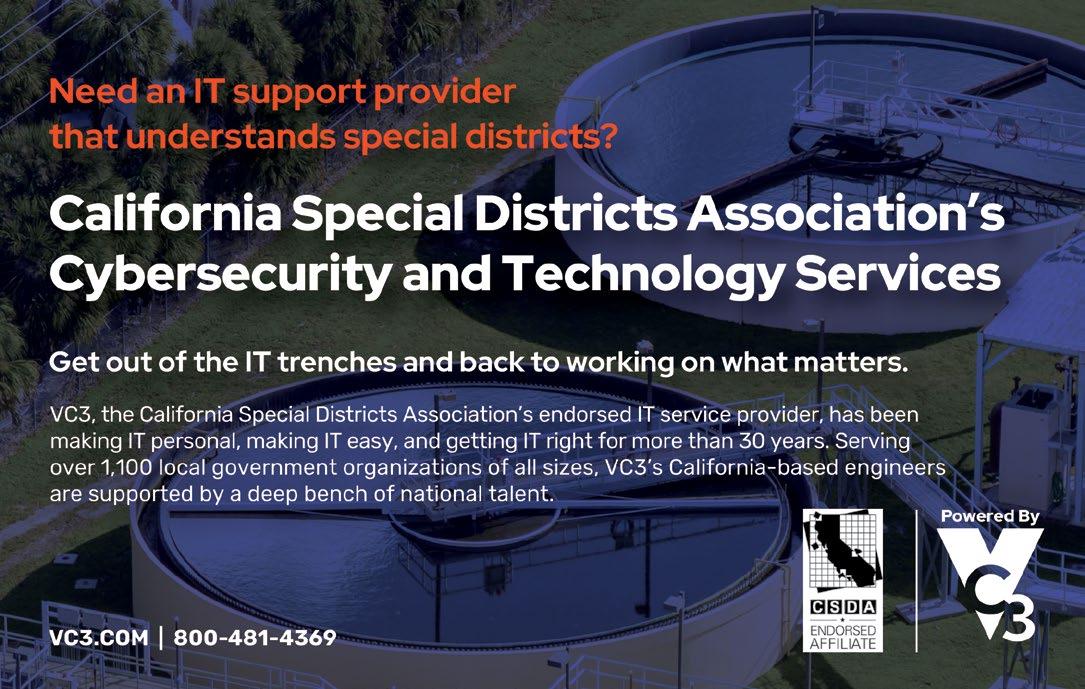
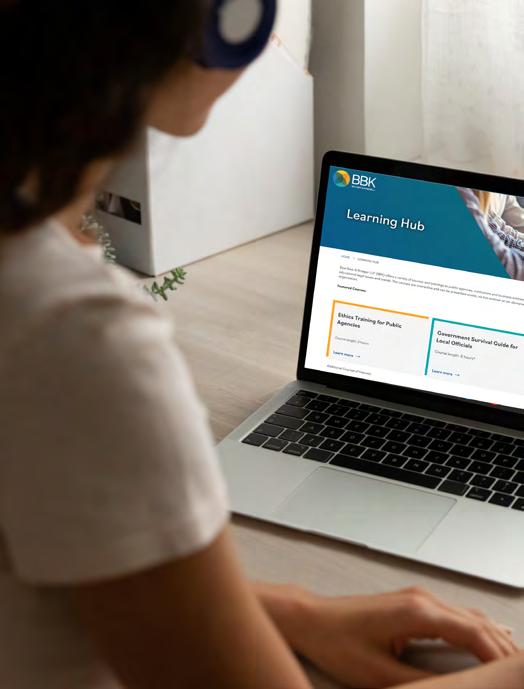
Ensure Compliance, Minimize Risk and Stay Informed with BBK’s Online Learning Hub
BBK offers essential courses and interactive trainings for public agencies, institutions and business entities.
Register your organization today


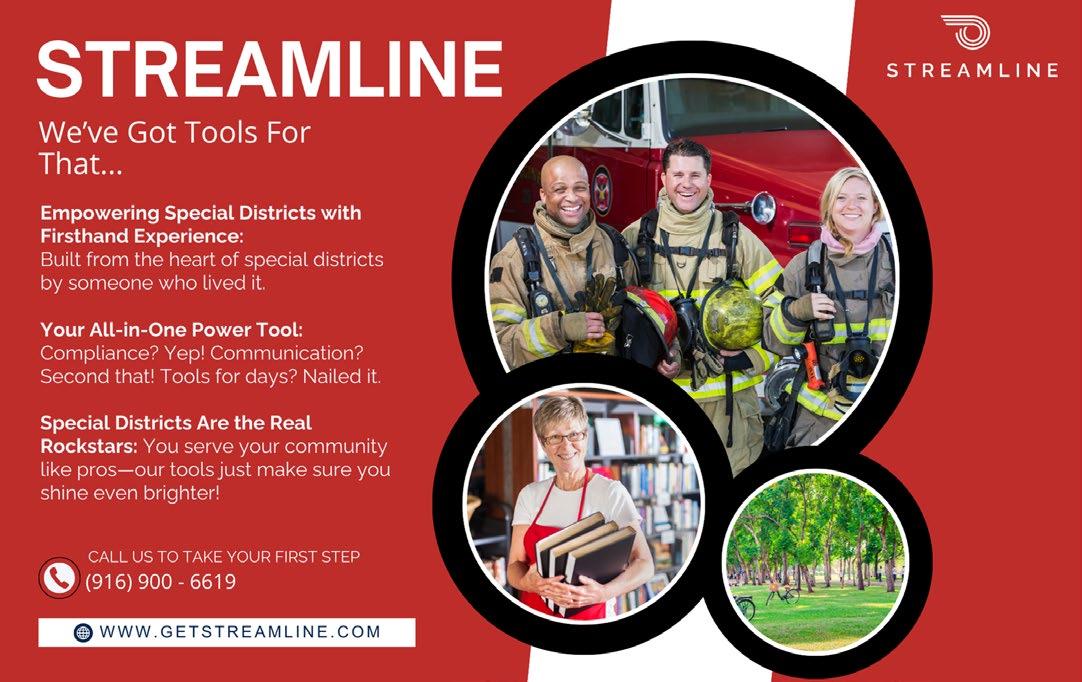



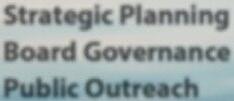
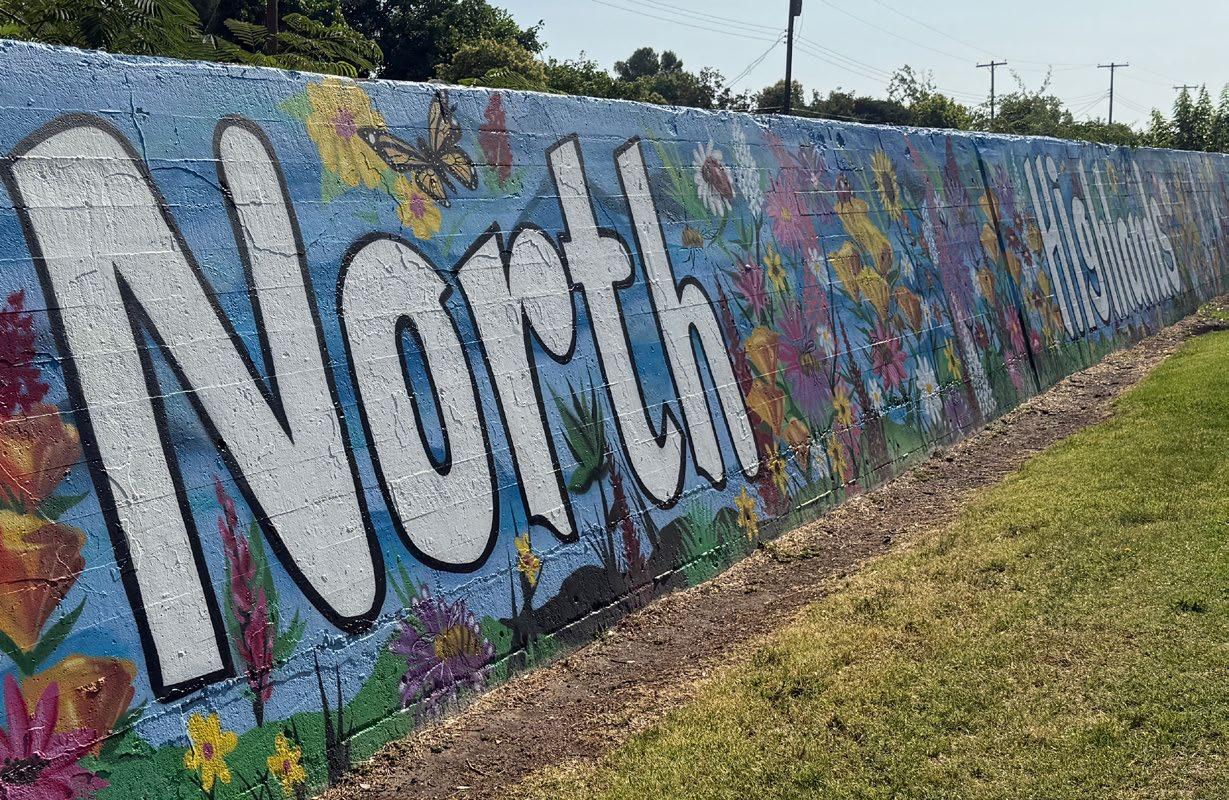



By Kristin Withrow, Communications Specialist, CSDA
Public parks play an essential role in the social and recreational fabric of communities. When plagued by graffiti, the public’s impression can be tainted resulting in less pride in the park and even in the community as a whole. Located in Sacramento County, the North Highlands Recreation & Park District (NHRPD) sought to overcome the challenge of graffiti and help the community embrace their 13 parks with their creative Paint the Parks program.
an initiative that strategically targets high-traffic, graffitiprone areas within parks, turning them into visually stimulating and interactive art spaces.
These pieces not only beautify the environment but also instill a sense of ownership and respect within the community. Importantly, Murray reported, “there have been no issues of graffiti since we’ve done this mural project.”
“The hope was that if we just activate these parks with something really beautiful and vibrant and get the community involved, people would be more protective of our parks.”
Paint the Parks began with a community mural: a 100foot wall brought to life through local design input and collaborative artistry. The mural stood resilient, untouched by the graffiti that had previously marred the area. Inspired by this success, NHRPD took it a step further to roll out Paint the Parks,
Rachel Murray Recreation Superintendent
Central to the program is its robust community outreach and volunteer-driven projects. By engaging local residents, non-profits, and businesses, the program turned paintbrushes into powerful tools for social change. Volunteers feel valued and connected through their active participation, fostering a shared commitment to sustaining the parks’ enhanced environment.
Community volunteer Lindsey Keefauver said the project “gives a whole, brand-new life to the park.”
This inclusive approach has delivered dual benefits: it encourages the public to embrace the parks while reducing project expenses. Local businesses contributed paint and supplies, donations paid for shirts for volunteers, and restaurants provided meals on painting days. Volunteers proudly wear their shirts emblazoned with the Paint the Parks logo, symbolizing their role as ambassadors for park revitalization.
Paint the Parks operates on a cost-neutral model that eases the financial and operational burden on NHRPD. By leveraging community partnerships, the program cuts down on maintenance costs, particularly the repetitive task of graffiti removal. The resulting reduction in vandalism not only saves public funds but also frees park staff to focus on enhancing services rather than damage control.
Beyond cost savings, the initiative notably boosts park engagement. Parks adorned with Paint the Parks murals
report increased visitor traffic and broader participation in recreational activities. The program has ignited a sense of neighborhood pride and redefined the role of public art— not merely as aesthetic enhancement, but as a proactive tool for crime prevention and space activation.
The success of Paint the Parks has generated interest from other park districts and agencies seeking sustainable, high-impact solutions for community beautification and safety challenges. Its uniqueness lies in combining art, education, and recreation with a grassroots, volunteercentered framework that is scalable and adaptable, even for organizations with limited resources.
Paint the Parks turned graffiti-ridden areas into vibrant canvases of pride and participation, transformed public perception, increased safety, and fostered lasting community connections—all while keeping costs in check. For its innovative community outreach and cost control measures, NHRPD has earned the 2025 CSDA Innovative Project of the Year Award for a small district.
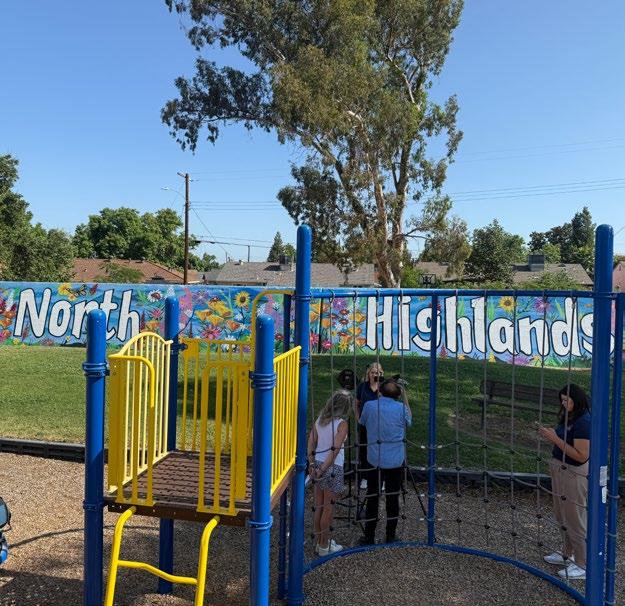
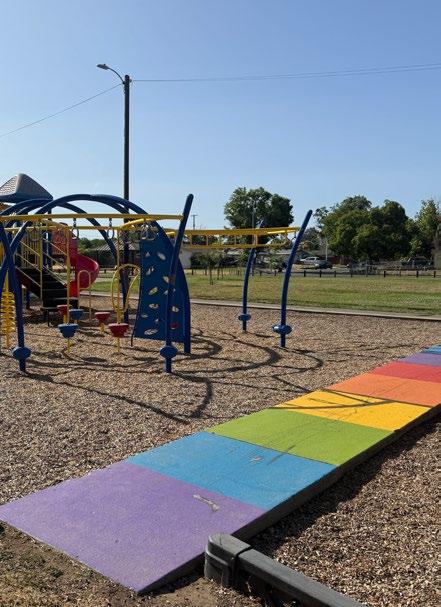
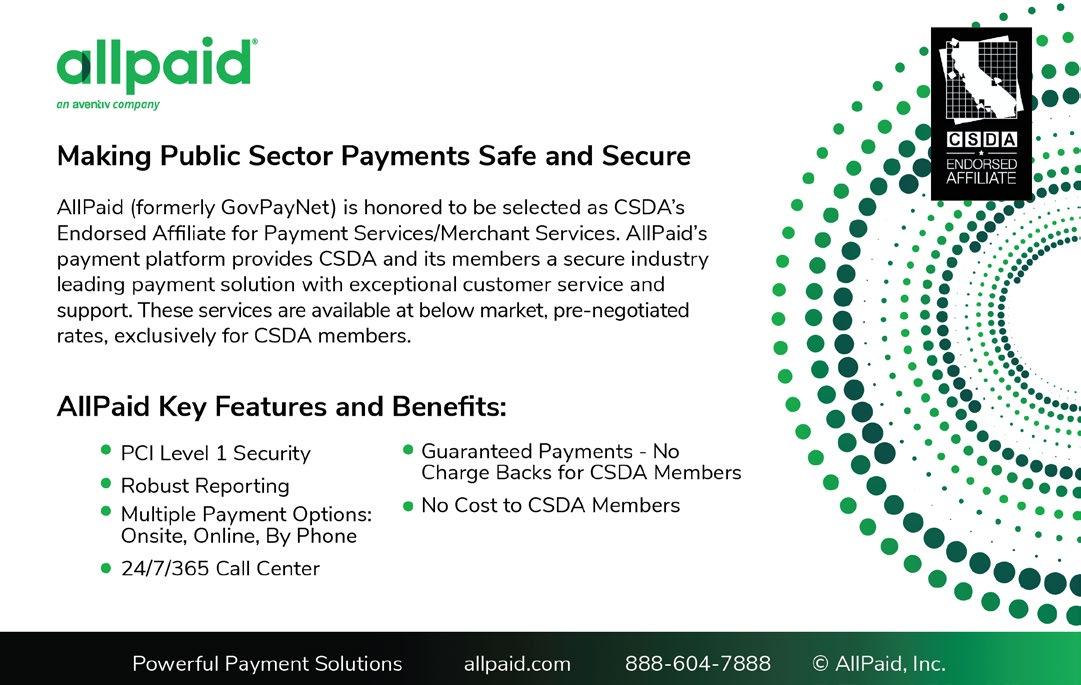







By Kristin Withrow, Communications Specialist, CSDA
In today’s public utility landscape, technology is foundational for delivering essential services safely, reliably, and transparently. Beaumont-Cherry Valley Water District (BCVWD) exemplifies this principle. Awarded the 2025 CSDA Excellence in Technology Award, BCVWD has an impressive array of technological integration across their operation.
Founded in 1919, BCVWD provides water service to more than 23,000 connections. With a mission grounded in sustainability, transparency, and cost control, the district has strategically invested in technology to accomplish its goals. Their information technology department is central to this effort that includes core infrastructure, cybersecurity, customer engagement and emergency communications.
BCVWD has established a fully redundant server environment supported by hybrid cloud architecture and network segmentation. This allows for uninterrupted service and secure remote access through Virtual Desktop Infrastructure (VDI). Extensive fiber optic and Wi-Fi installations connect all district sites and remote field locations, monitored continuously via centralized dashboards that facilitate real-time diagnostics and quick response.
One of their standout achievements is the in-house deployment of over 21,000 smart meters—covering 100% of its service area—in a prime example of a successful and cost-efficient implementation of Advanced Metering Infrastructure (AMI). The team engineered solar-powered collectors and mobile units to gather data in real time. This drives impressive results, including an 80% reduction

in meter-reading labor, a 60% decrease in fleet fuel consumption, rapid leak detection, and over $500,000 in annual savings.
The district modernized its Supervisory Control and Data Acquisition (SCADA) systems to enable encrypted, segmented data flows. Field operators can monitor and manage pumping stations, reservoirs, and treatment processes securely from tablets or desktops—ensuring operational control without sacrificing security.
BCVWD’s cybersecurity program incorporates hybrid frameworks from NIST, ITIL, CISA, WaterISAC, and CIS, tailored specifically for a public utility environment. Key features include role-based access controls paired with multifactor authentication, zero-trust network segmentation, automated vulnerability scanning, secure VPN access for mobile crews, and encrypted data transmissions.
Regular penetration testing, phishing simulations, and recovery drills, and a Cybersecurity Incident Response Plan
are integral to maintaining system integrity. Notably, in 2023, the district successfully thwarted targeted phishing attacks with zero downtime, demonstrating both vigilance and resilience.
Technology has enabled BCVWD to enhance its transparency and customer experience. The district’s fully ADA-compliant, mobile-responsive website and redesigned customer portals provide real-time usage data, leak and overuse alerts, multilingual support and mobile-friendly services. Public documents, such as board agendas and financial reports, are accessible online, further strengthening community trust and engagement through transparency.
Emergency notification systems and digital archives improve communication during critical events, ensuring residents stay informed at all times.
By leveraging in-house expertise rather than outsourcing, BCVWD has delivered sophisticated IT systems at a fraction of typical costs. This approach has secured $1.5 million in grant funding for advanced metering infrastructure deployment and achieved significant labor and operational savings. Streamlined procurement and asset management processes have further enhanced district efficiency and financial stewardship.
Beaumont-Cherry Valley Water District’s strategic integration of technology showcases what a midsized water agency can achieve. By focusing on resilience, security, cost-efficiency, and customer engagement, and relying on strong in-house capabilities to control cost, BCVWD provides an inspiring model for other agencies to follow.


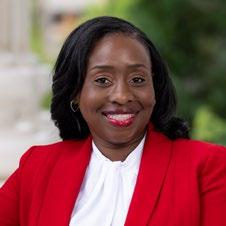
Assemblymember Rhodesia
Ransom represents California’s 13th Assembly District, which includes the vibrant communities of Stockton, Tracy and Mountain House. With over two decades of experience in public service, Rhodesia has been a fierce advocate for social justice, equitable education, and economic empowerment.
As you are in the first year of your Assembly term, can you please share your priorities and goals for this session?
My top priority is tackling affordability in all its forms. Whether it’s housing, utilities, or everyday costs that families feel in their budgets. I represent Assembly District 13, one of the most diverse regions in California, and home to people who are working hard to build better lives but are being priced out of their communities. I’m focused on bringing long-term, sustainable solutions that put working families first, while making sure California protects our future generation and remains a place where people can afford to live and thrive. That means delivering reforms that reflect what our constituents are actually experiencing
How has your role on the Assembly Local Government Committee helped you advocate for your constituents?
Having served in local government for many years, I know first-hand how vital it is for local government to work with state government to deliver for our communities. I also have experience navigating state policies and know what’s working and what’s not working. Being on the Assembly Local Government Committee allows me to bring local experience to the state level, ensuring our cities, counties, and special districts have a voice when it comes to key decisions about infrastructure, housing, and services.
I’m also Chair of the Committee on Emergency Management, which gives me a chance to work closely with special districts and local partners to help California
get ahead of the next disaster. Whether it’s wildfires or flooding, our response needs to be fast, equitable, and rooted in collaboration.
Based on your years as a public servant at the local and state level, what do you believe are the major issues facing California special districts?
Stable funding and workforce shortages are definitely top of mind. I’ve seen how special districts play a crucial role in delivering services people rely on like water, flood protection, public safety, and parks. However, many of our districts are being asked to do more with less, while also navigating staffing gaps and increased demand. We need to ensure they have the support to recruit and retain the right people and access to resources to modernize infrastructure and plan for future growth
As someone who represents a significant portion of San Joaquin County, what do you see as some of the biggest challenges facing the local community?
San Joaquin County is growing fast, and that growth comes with big challenges. The rising cost of utilities, housing shortages, limited access to healthcare and water security are all critical concerns. Our districts also play a major role in agriculture, and we’re facing serious questions about workforce sustainability, flood protection, and long-term water supply. Balancing this growth while protecting our communities, farmland, and environment is a top priority.
What advice would you offer to special districts who want to build stronger relationships with state lawmakers and elevate the voice of their district and the community it serves?
Start building the relationship before a crisis hits. Invite us out to visit, let us see your operations first-hand and meet your team. Share the data but also share the stories. We want to understand your challenges and your wins so we can be better advocate for you in Sacramento. Staying engaged, bringing solutions to the table, and being transparent about what’s working (and what isn’t) will go a long way.




“Trash It, Don’t Flush It!”
By Morgan Leskody, Communications Specialist, CSDA
Ross Valley Sanitary District (RVSD) may be small in staff size, but their approach to solving big problems is nothing short of mighty. This year’s recipient of CSDA’s Exceptional Public Outreach & Advocacy
Award – Small District, RVSD launched the “Trash It, Don’t Flush It!” campaign, a cleverly branded public education effort sparked by an unusual sewer system problem and a tight-knit team that thrives on collaboration.
It started with gloves. During routine maintenance, field crews began noticing a significant number of latex gloves accumulating in the wastewater system. These improperly flushed gloves were clogging lines, damaging infrastructure, and posing an environmental threat to the community.
Unlike the more commonly addressed issue of flushable wipes, latex gloves had been largely overlooked in public messaging. Recognizing the gap, RVSD began asking new questions: Where were the gloves coming from? Who was flushing them? And how could the district respond with a campaign that didn’t just inform but also inspire behavior change?
The campaign name, Trash It, Don’t Flush It!, came from a brainstorming session that reflects RVSD’s culture of teamwork and openness. In fact, the idea was playfully sparked by the general manager, who also happens to be in a local band, an anecdote that speaks less about the music and more to the comfort and creativity that has been fostered in this small, well-connected team.
This kind of real-time, all-hands-on-deck collaboration is one of the district’s core strengths. With fewer silos and stronger interdepartmental relationships, the RVSD team moved quickly from identifying the problem to developing a clear and impactful response.
RVSD knew that a successful campaign needed to be smart, targeted, and grounded in data. They tapped into their Computerized Maintenance Management System (CMMS) to identify neighborhoods most affected by glove-related clogs. This allowed them to geo-target digital ads directly to workers in high-glove-use industries like healthcare, hospitality, and personal care.
It’s the kind of precision you might expect from a much larger agency, but RVSD showed that with the right tools
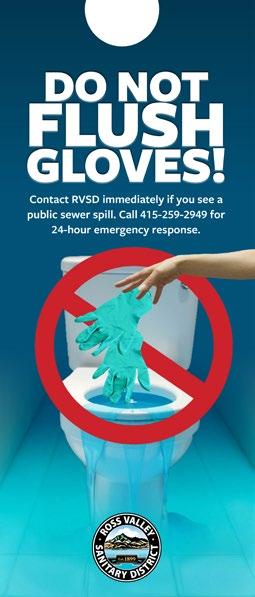
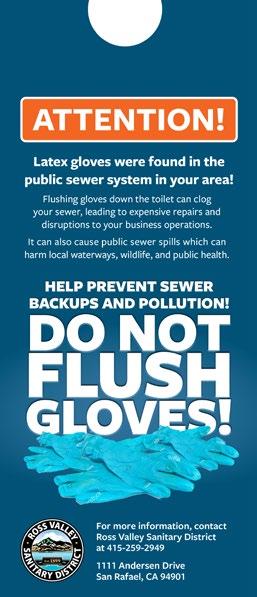
and teamwork, smaller districts can execute at the same level—and often faster.
The campaign’s success also hinged on accessibility. All materials were produced in English and Spanish and closed-captioned for broader reach. The campaign webpage was designed for mobile-first access, ensuring that workers could receive the message regardless of device or location.
Beyond the screen, RVSD took to the streets—literally. Door hangers were distributed in key neighborhoods and businesses, and a “sewer mystery box” added a hands-on learning element to outreach events. From TV spots and YouTube videos to community events and social media, the campaign used every available channel to make the message stick.
Since launch, Trash It, Don’t Flush It! has become one of the most visited pages on RVSD’s website, second only to the homepage and employee portal. Digital engagement exceeded expectations, and the number of gloves appearing in the wastewater system has notably declined.
But just as important as the numbers was the internal momentum the campaign created. The effort boosted
This kind of real-time, all-hands-on-deck collaboration is one of the district’s core strengths. With fewer silos and stronger interdepartmental relationships, the RVSD team moved quickly from identifying the problem to developing a clear and impactful response.
morale, strengthened interdepartmental collaboration, and gave staff a tangible win to rally around. The campaign also garnered praise from partner organizations and demonstrated RVSD’s role as a regional leader in outreach innovation.
What makes this campaign shine isn’t just the outcome, it’s the process. RVSD’s size allowed them to be nimble, connected, and creative. In districts with fewer staff and more cross-functional overlap, ideas can be shared and executed quickly. Everyone has a voice, and the power to impact the organization, such was the case of field crews identifying issues on the ground that spark full-scale campaigns.
“Everyone contributed,” said Communications Manager Cristina Velazquez. “From the general manager who named the campaign, to the engineers and field crews who helped identify hotspots—this campaign was built by all of us, together.”
With Trash It, Don’t Flush It!, Ross Valley Sanitary District proves that smaller districts—with a clear focus and commitment to their community—can lead with impact, innovation, and just the right amount of grit.
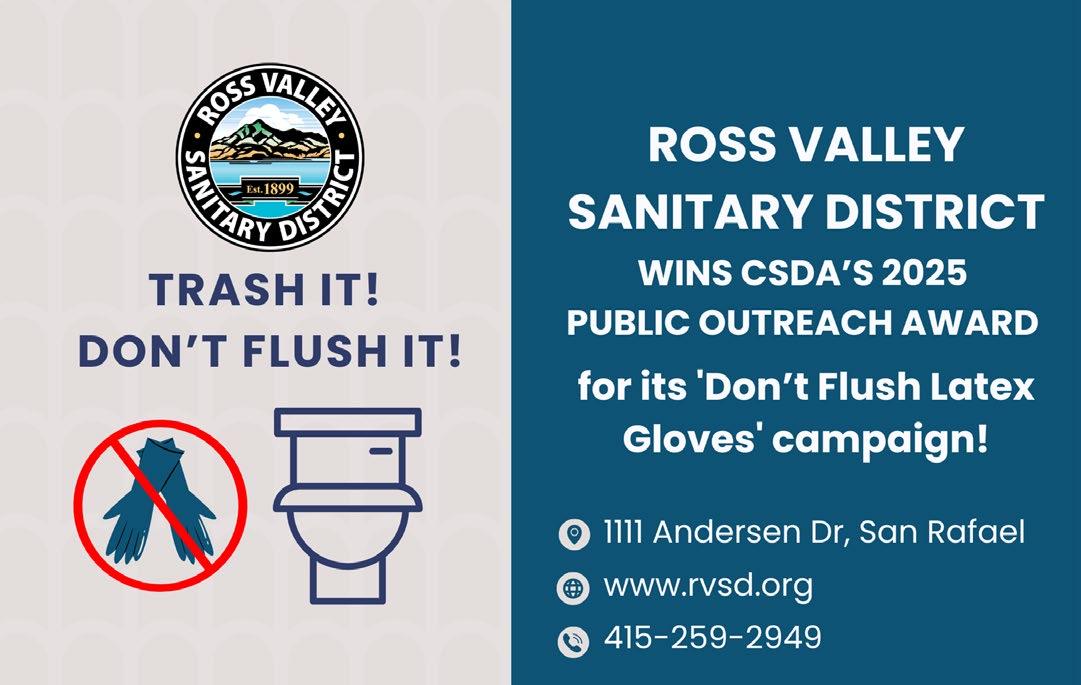
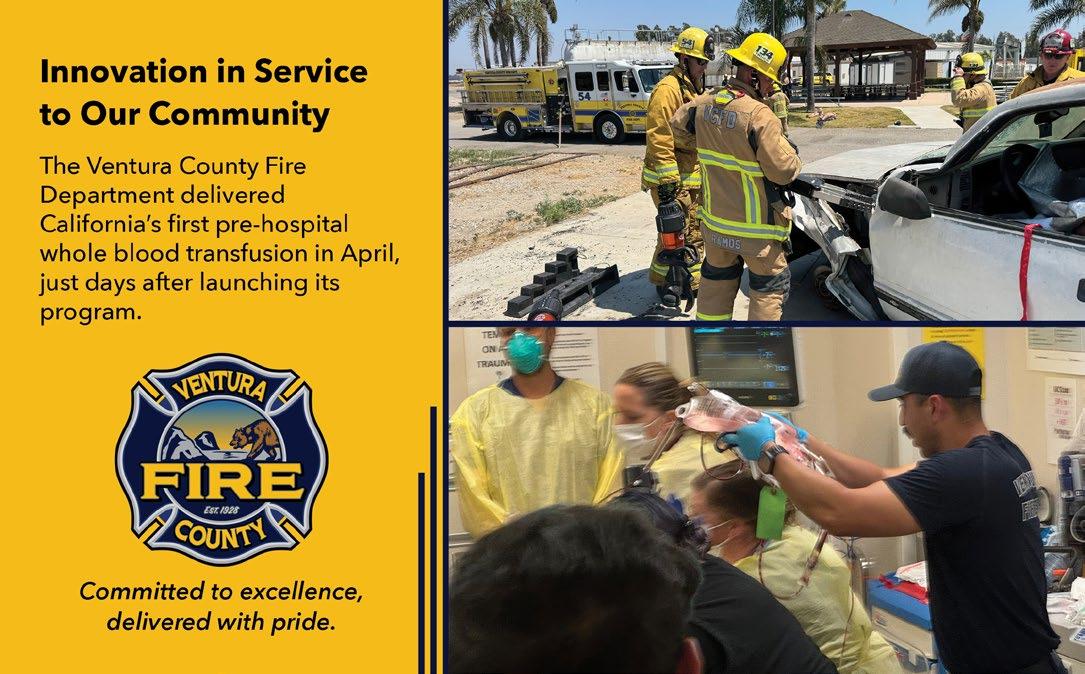

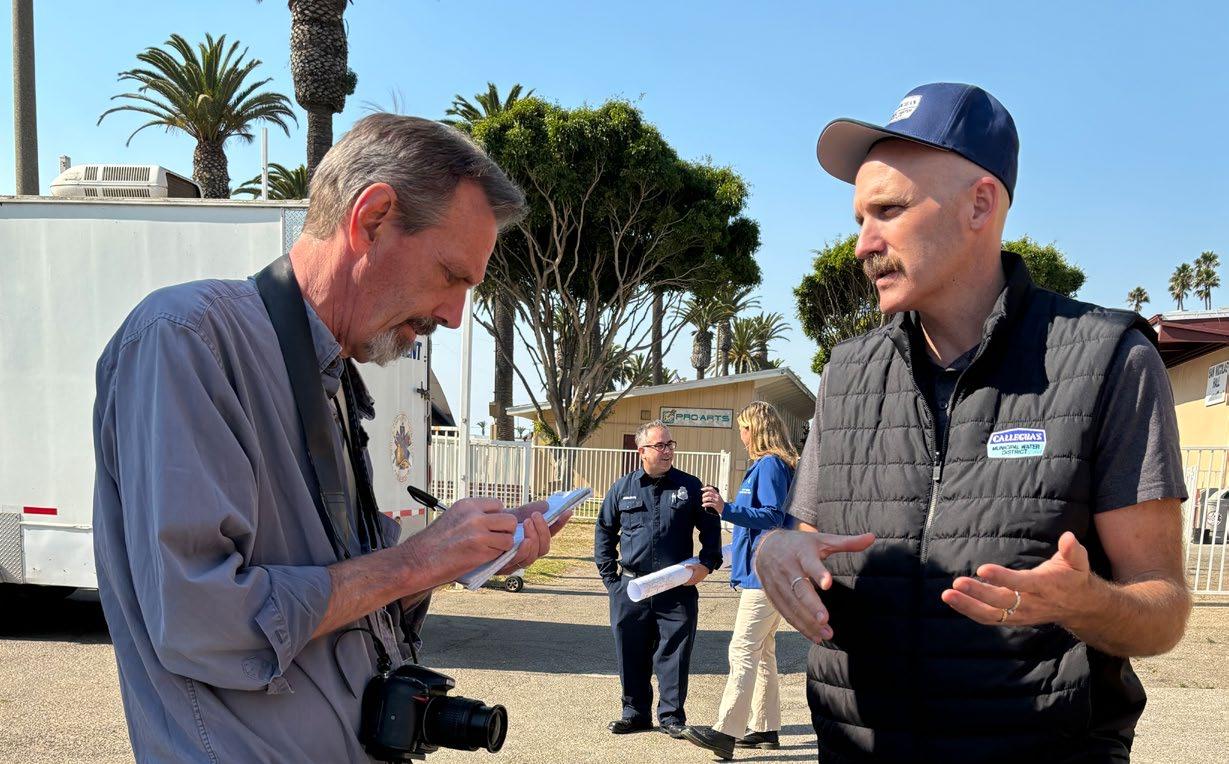



By Kristin Withrow, Communications Specialist, CSDA
Calleguas Municipal Water District is a water wholesaler that imports and distributes water to three-quarters of Ventura County’s population through 19 retail water suppliers. Their vast service area covers about 365 square miles and serves 650,000 people. This large service area, and its many water suppliers, means Calleguas has an incredible responsibility to use its expertise and resources during emergencies, such as the devastating wildfire event that struck the county in November 2024.
When winds whipped the Mountain Fire through the county, the staff response exemplified the principles of messaging control in crisis communication. Controlling the narrative in times of crisis is essential to ensure that accurate, timely information reaches the community, mitigating misinformation and enhancing trust among the public and professionals and basing decisions on facts. As the wind-driven fire spread, media outlets and social media began circulating misinformation about fire
hydrant functionality, incorrectly stating that firefighters were unable to save homes due to a lack of water supply. Recognizing the potential damage of this false narrative, the Calleguas team took immediate action. Addressing the rumors head-on, they produced a concise video explaining the technical realities of hydrant hydrology, including how elevation affects hydrant pressure and how firefighters proactively compensate with water tenders and other resources. The video was rapidly disseminated across social media platforms, and traditional news outlets, countering the misinformation with clear, expert information.
“The incredible cohesion of our team was fully demonstrated in a time of crisis,” noted External Affairs Manager Charlotte Holifield. “Everyone understood their roles, kept each other informed, and worked together to ensure dissemination of information in a unified, accurate manner.”
Simultaneously, the district’s support extended to their affected retailers. The communications team provided tailored messaging resources to help these purveyors respond effectively to misinformation circulating among their communities. This dual approach of public education and frontline collaboration exemplifies an integrated communications strategy that prioritizes accuracy and responsiveness.
“Being able to support local water suppliers and develop a unified message was critical to ensuring our communities were receiving timely and factual information,” said Daniel Cohen, Emergency Response Coordinator. “The value of interagency partnerships in public messaging was evident throughout this incident.”
Beyond digital outreach, Calleguas staff attended daily county briefings involving first responders, elected officials, and media to serve as authoritative resources on water supply issues during the firefight. These briefings were critical for clarifying technical information while building relationships with media and public officials, further ensuring that accurate information was broadcast across trusted channels. Continued engagement, including attending community and Board of Supervisors meetings, reinforced the transparent and participatory impact of the staff making themselves available to answer questions and provide clarity.
The proactive approach extended to community support as well. By assisting multiple retailer systems with flushing and water quality testing, plus establishing a freshwater fill station for local residents and their animals, Calleguas
“ The incredible cohesion of our team was fully demonstrated in a time of crisis.” noted “Everyone understood their roles, kept each other informed, and worked together to ensure dissemination of information in a unified, accurate manner.”
Charlotte Holifield External Affairs Manager Calleguas Municipal Water District
demonstrated leadership, responsibility, and empathy—key elements in sustaining public confidence during crises.
The swift action taken by Calleguas underscores essential crisis communication principles, including rapid response, transparency, clear messaging, and stakeholder engagement. These elements are vital to maintaining messaging control, shaping public perception, curtailing rumors, and safeguarding the district’s reputation by ensuring the community understood the challenges faced and the actions taken.
In today’s information landscape, where misinformation can spread as swiftly as wildfire, organizations must prepare communication strategies that enable them to address inaccuracies head-on, support affected partners and maintain visibility and accessibility throughout the crisis.
Calleguas’ experience with the Mountain Fire demonstrated that effective crisis communication is foundational to public safety and trust. Emphasizing quick, accurate information dissemination and active stakeholder engagement, rather than reactive silence or delay, empowered Calleguas to guide the story in a way that preserved confidence in the emergency response and supported community resilience.
For the exceptionally proactive communications response to this crisis, Calleguas Municipal Water District has been awarded the 2025 CSDA Exceptional Public Outreach Award for a Large District.
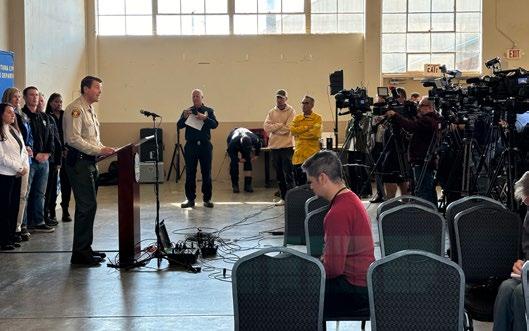


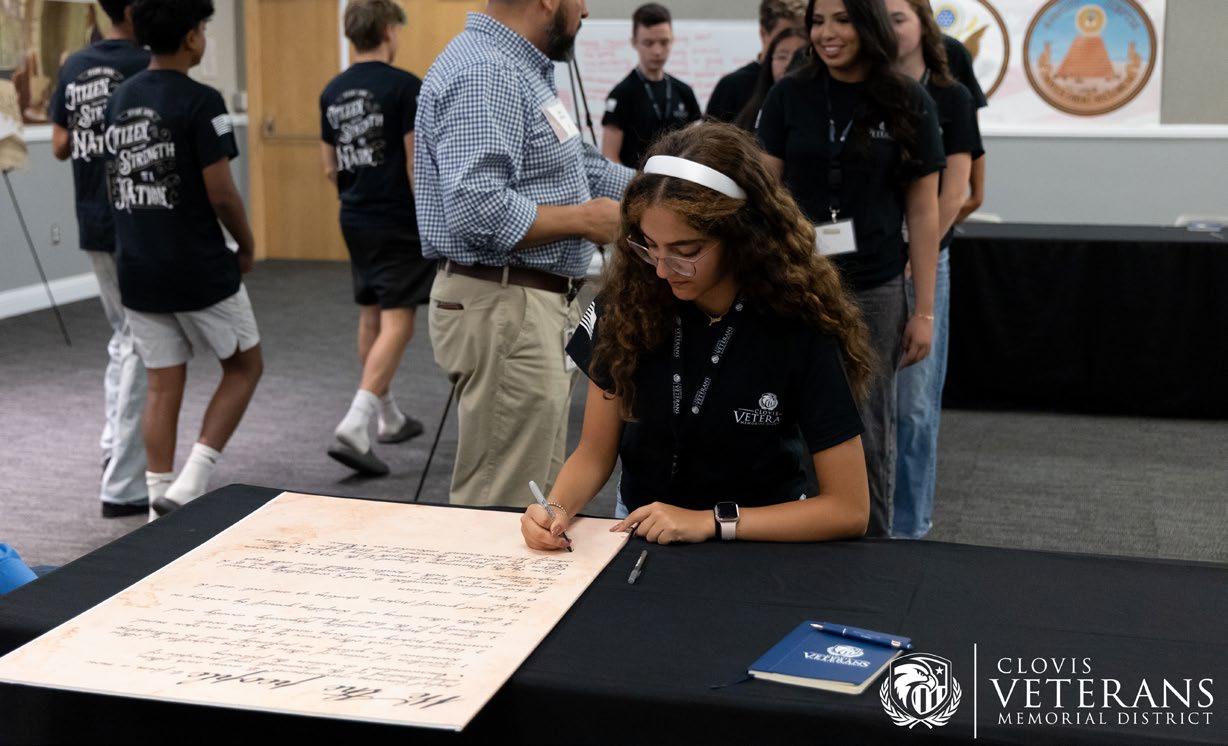
By Taylor Chavez, Public Relations & Communications Specialist, Clovis Veterans Memorial District
In California’s diverse network of special districts, some provide water. Others manage parks or fire protection.
The Clovis Veterans Memorial District (CVMD) serves a distinct mission: to honor the service and sacrifice of America’s veterans by strengthening the civic fabric of the community. Its youth summer program, the American Citizen Toolkit Program (ACT), is a week-long civic education and leadership experience for high school students built around the values of Honor, Educate, and Inspire.
CVMD was established under the California Military and Veterans Code, the principal act authorizing the formation of memorial districts. These districts are entrusted with managing public facilities that serve veterans and their communities. CVMD has expanded this purpose— transforming its space into a vibrant civic classroom. In collaboration with veterans, civic leaders, and educators, ACT becomes a tribute to service and a catalyst for empowerment.
The program honors not only those who wore the uniform but also the ideals they defended: liberty, justice, and selfgovernance. ACT participants study the Constitution—the same document that every veteran, elected leader, public servant, and naturalized citizen swears to uphold.
“Our military takes an oath to uphold and defend our Constitution of the United States, that which we have been studying,” said CVMD CEO Lorenzo Rios. “And so the greatest way of saying, ‘Thank you for your service,’ is by being great citizens.”
Veterans from American Legion Post 147, Veterans of Foreign Wars Post 3225, and their auxiliary families continue to serve by mentoring students, cooking meals, and sharing their stories. Their presence is a living lesson in patriotism and public service, reminding students that freedom is not inherited—it must be protected and passed on.

ACT students engage deeply with the Declaration of Independence, Constitution, and Bill of Rights. They examine how the writings of Thomas Aquinas and John Locke shaped the Founders’ belief in natural rights and limited government. Through debate, collaboration, and direct dialogue with public officials, students build both understanding and civic confidence.
For CVMD, this is more than academic—it’s mission-driven. Memorial districts like CVMD are uniquely positioned to bridge the values of the past with the responsibilities of the present, making civic education an act of remembrance and renewal.
ACT is designed to move students from awareness to action. “Take action with purpose—to make our country better, not just for a select group, but for everyone privileged to be an American,” said participant Christiana Garcia (17).
President Ronald Reagan said it best: “Freedom is never more than one generation away from extinction. We didn’t pass it to our children in the bloodstream. It must be fought for, protected, and handed on.”
“
Freedom is never more than one generation away from extinction. We didn’t pass it to our children in the bloodstream. It must be fought for, protected, and handed on”
President Ronald Regan
ACT brings that truth to life. It teaches students that liberty is a legacy—and they are its stewards.
This program showcases how the founding documents of the United States provide citizens of every age and every era the tools to fulfill the Preamble’s promise—to form a more perfect union. That responsibility does not fall solely on veterans. It rests on every citizen. And that is how we make the sacrifice of every veteran matter.
By connecting past sacrifice to present responsibility, ACT exemplifies how a special district can preserve history while shaping the future—one engaged, informed, and inspired citizen at a time.
To learn more about the American Citizen Toolkit or the Clovis Veterans Memorial District, visit cvmdistrict.ca.gov.
Located in the heart of California’s Central Valley, the Clovis Veterans Memorial District serves approximately 190,000 residents. Established in 1946 under the California Military and Veterans Code, our mission is to provide a permanent living memorial honoring U.S. Military and Veterans; provide facilities and support programs to promote a legacy of service for preserving our community’s and country’s foundational ideals
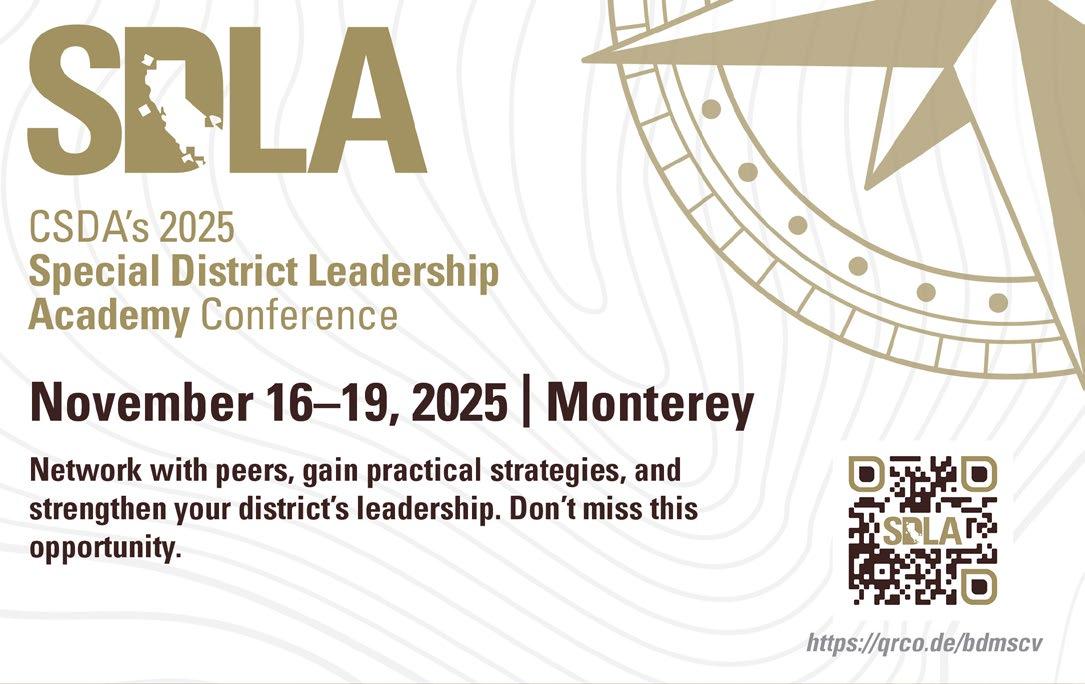

For more than 80 years, we have partnered with public, private and government agencies in California to help their communities thrive.
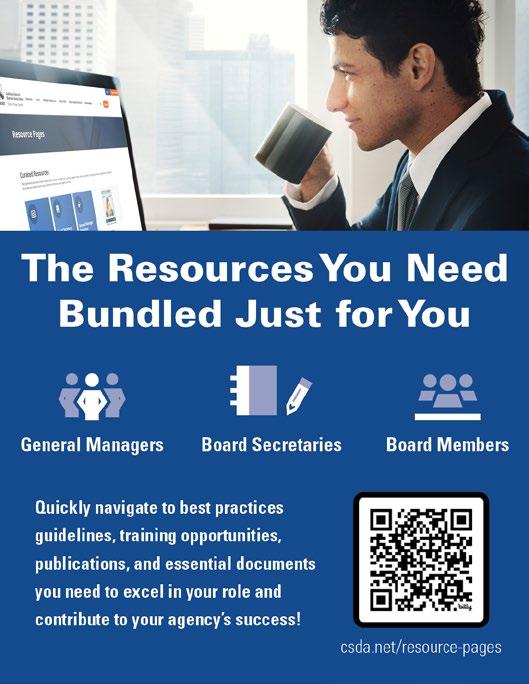
By Enriqueta Castro, CSP Interim Chief Risk Officer
This year’s ShakeOut Day is Thursday, October 16, when millions of people worldwide participate in earthquake drills at work, school, and home! California averages about 30 earthquakes a day. Nearly all of these are minor, but because of the elevated risk, everyone should know what to do in the event of an earthquake. Earthquake drills are an opportunity to practice how to be safer during earthquakes. Go to shakeout.org for additional information and resources.
CONDUCT AN ASSET INVENTORY
Make certain your interior and exterior assets are documented, preferably with photos and/or videos. Document information such as building names, values, content values, GPS coordinates, property descriptions, serial numbers, purchase and replacement cost values, etc.
Taking the time to develop a customized Emergency Action Plan (EAP) is not only required by Cal/OSHA, it’s also your best defense to protect your employees. CCR 3220 requires
California employers to have a written EAP in place. For those employers with 10 or fewer employees the plan may be communicated orally to employees, and the employer need not maintain a written plan.
The purpose of the EAP is to establish emergency response procedures to safeguard employees and on-site visitors in the event of an emergency. It outlines evacuation procedures, shelter-in-place procedures, emergency kits, emergency shelter in place supplies, and other relevant procedures based on potential emergencies that may occur. In addition to general procedures, the EAP should include procedures for specific types of emergencies that may occur at the district, such as earthquakes, fires, floods, utility outage, etc.
Reduce the risk of injury by conducting inspections to ensure:
1. Shelves, bookcases, ladders, tools, equipment, and stored chemical products are secured or anchored. Pay special attention to items over 42” in height.
2. Lips or seismic restraints are installed on open shelves containing chemical products, glassware, or other types of hazardous equipment.
3. Emergency exit routes are kept clear with no combustible materials stored in the pathway (i.e., space under stairs).
Other risk mitigation best practices include:
• Knowing the location of gas shut-off valves, first aid kits, and other emergency supplies.
• Ensuring fire extinguishers and emergency lighting are available and in good working condition.
• Reviewing your district’s Emergency Action Plan.
During an earthquake, managers should guide employees to:
1. Immediately drop down to their hands and knees and hold onto something sturdy. If using a wheelchair, lock the wheels and remain seated.
2. If a sturdy table or desk is nearby, crawl underneath it for shelter. If there is no shelter nearby, crawl next to an interior wall (away from windows). Crawl only if they can reach better cover without going through an area with more debris. Stay on their knees or bent over to protect vital organs.
3. If under a table or desk, hold on with one hand and be ready to move with it as it shakes. If seated and unable
to drop to the floor, bend forward, and protect the head and neck with their arms and hands.
4. Do not use elevators.
5. Do not use matches, candles, or any flame as a gas leak precaution
6. If outdoors, stand in the open; away from buildings, power lines, trees, and anything that might fall.
7. If driving, stop the vehicle and stay inside until the shaking stops.
1. Check for injuries. Provide first aid, if trained.
2. Expect aftershocks to occur. Be ready to once again Drop, Cover, and Hold On.
3. If in a damaged building, direct employees to go outside and quickly move away from potentially falling objects.
4. Meet at your district’s predesignated assembly area (refer to Emergency Action Plan).
5. If able, check water, gas, and electric lines in your area for damage. If necessary, shut off valves.
The key to protecting your employees during an earthquake or other emergencies is to have a customized Emergency Action Plan that includes procedures for district’s specific types of emergencies and, most importantly, conducting regular employee training. More information and resources are available at ready.gov/earthquakes





As the seasons change, so do your challenges. That’s why SDRMA’s comprehensive risk management pool is built specifically for California’s special districts—providing stable, affordable, and tailored protection.
We do more than provide coverage. We partner with you to promote a culture of safety and support your district goals. #SDRMACares #MemberFocused #pooltogether

Scan the QR code to request a quote today



Proudly serving California public agency special districts since 1986.
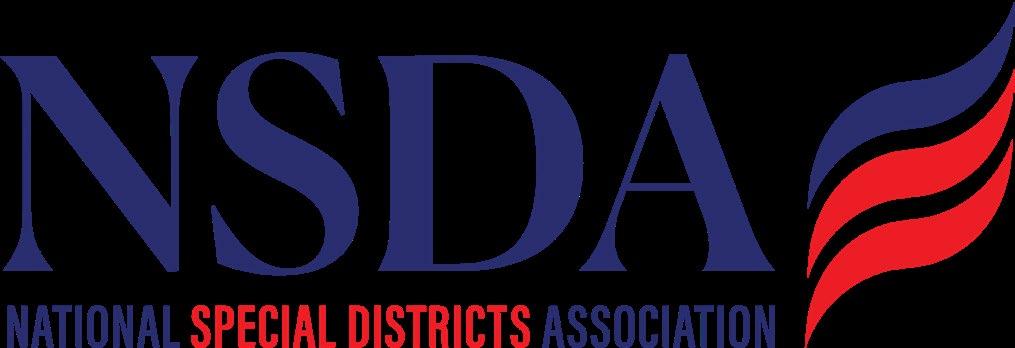
By the Community Impact Coalition
Nonprofits and associations are the lifeblood of our communities. As recently as the January Southern California wildfires, nonprofits demonstrated a swift ability to respond to emergencies, feed families, house veterans, educate children, and support local economies, filling essential gaps where government and private industry could not. For California’s special districts, these partnerships are vital. The ability of mission-driven organizations to reinvest in their communities, act quickly, and focus on service—not profits—is made possible by their tax-exempt status.
When recent federal legislation threatened the resources we rely on to carry out our work, the California Special Districts Association (CSDA) immediately recognized the gravity of the situation. Through our active participation in the National Special Districts Association, CSDA joined a broad alliance to defend the tax-exempt sector and ensure the essential work of nonprofits and special districts could continue without disruption.
That alliance is the Community Impact Coalition (CIC)—led by Michelle Mason, President and CEO of the American Society of Association Executives (ASAE). The CIC is a united effort that brings together a diverse array of nonprofits and associations, all singularly focused on defending the nonprofit sector from legislative attacks. Thanks to Mason’s quick action and the work of the CIC, the sector successfully staved off several negative proposals in the federal tax package and preserved the framework nonprofits depend on to deliver lasting impact in each and every community they serve.
The coalition moved swiftly, launching a coordinated advocacy campaign to educate lawmakers and stakeholders about the importance of tax-exempt organizations and the far-reaching consequences proposed changes could have. Through targeted outreach and strategic communications, the coalition illustrated how even minor adjustments to tax policy that impact nonprofits could ripple through communities, impacting countless lives and services.
Thanks to the perseverance and unity of the CIC, the final legislative bill was amended to remove harmful language targeting nonprofits for tax revenue. This outcome was a significant victory for the sector and a testament to the power of collective advocacy. Every organization’s contribution was vital, and CSDA extends its gratitude to the lawmakers who stood with us to protect the nonprofit sector, in turn protecting their communities.
Throughout this process, CSDA played a key role by:
• Mobilizing California’s special districts to voice their concerns to federal representatives.
• Sharing real-world examples of how special districts and nonprofit partners deliver essential services to millions of Californians.
• Providing testimony and data to illustrate the potential impact of the proposed legislation on local communities.
• Coordinating with the National Special Districts Association to ensure that the unique needs of special districts were represented in national advocacy efforts.
While this legislative victory is significant, the threat to the tax-exempt sector is ongoing. CSDA remains committed to vigilance and proactive engagement, working alongside the CIC and other partners to monitor and respond to future challenges. Our voice, and the voices of California’s special districts, will remain instrumental in these ongoing efforts to ensure that the critical work of nonprofits and associations remains protected.
Special districts and their nonprofit partners are the foundation for a thriving state, fostering innovation, providing essential services, and empowering individuals.
Just a few examples of this critical partnership between special districts and nonprofits include:
• Nonprofits that partner with public utilities to assist low-income and senior ratepayers
• Park foundations, established to seed funding for new recreational facilities and programs
• Organizations that support our first responders harmed in the line of duty
• Veterans groups
• Open space and land preservation entities
By standing together, we can ensure that these vital organizations remain strong, vibrant, and able to continue their indispensable work in California and across the country for generations to come.


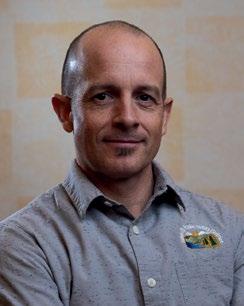
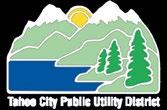

“The
investment by our members and other nonprofit organizations in [the CIC Coalition] was critical for ensuring that the voices of the association community were heard in the 2025 tax reform debate.”
Michelle Mason, ASAE President and CEO


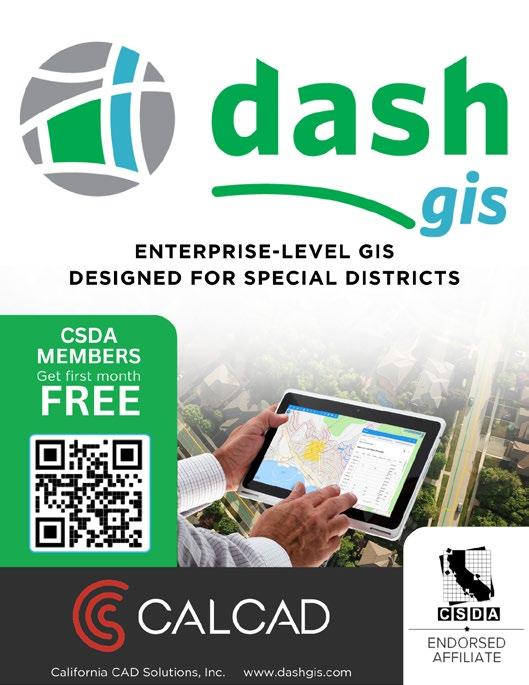

By Derek P. Cole, Partner, Cole Huber LLC
Board vacancies can arise unexpectedly—from resignations, board members moving, or other reasons. When vacancies occur, California law provides a clear process for filling them. But the process moves fast and requires important decisions.
Here is a practical guide for navigating the process.
First, you should determine if an office has become vacant. State law recognizes several situations in which vacancies occur.
The most common is resignation. A board member may resign by delivering a written resignation to the board of directors. When a board member moves outside agency territory—or out of an electoral district if voting is by
district elections—an office is also vacated. And because we all are mortal, offices are of course vacated by death.
Other grounds include absence from the state without permission and ceasing to discharge official duties for three or more months. Upon felony conviction, an office becomes vacant if the conviction involves the director’s official duties.
This is rare but it does happen. In a recent case, a councilmember attempted to retract a resignation made from a jail cell shortly after arrest. A legal battle ensued. Some grounds for vacancies—such as excessive absences or being out of state—are rife for creating disputes. Board
members may disagree, for instance, that out-of-state or other absences were unexcused or excessive.
If board members refuse to vacate, a special type of lawsuit, known as “quo warranto,” is necessary. This lawsuit proceeds like other civil lawsuits, but can only be filed with the State Attorney General’s permission.
Once you have concluded that an office is vacant, the first step in filling the seat is to notify the county election official. You must do this within 15 days. Because counties administer special district elections, it is important to give timely notice.
Immediately after determining whether an office is vacant, your board of directors should meet to discuss how to fill the vacancy.
Be cognizant of the timing. State law requires your board of directors to do one of two things—appoint a new director or call a special election—within 60 days. If your board meets once a month, it may need to hold a special meeting to get through the process.
Most agencies choose to fill vacant positions by appointment. But sometimes they choose to let voters decide.
If this option is chosen, the election occurs on the next of the five state-established election dates that fall at least 130 days after calling the election. Beware: this option can be expensive, especially if the next election date does not occur when other elections are scheduled.
To understand what calling an election would cost, you should verify the amount the county elections office would charge. For smaller districts, this may be prohibitive.
If appointment is chosen, make the appointment within 60 days.
If appointment is chosen, your agency must advertise the appointment in three conspicuous places at least 15 days before making the appointment. Advertising on your agency’s website and social media is also a good idea.
State law does not prescribe any process for making appointments. Some agencies have created processes in advance—a practice I recommend.
However your agency proceeds, any interviews your board conducts must occur in open session. The Ralph M. Brown Act does not authorize closed sessions to consider vacancies.
If your board appoints a new member, your agency must notify the county elections official of the appointment within 15 days. (Id.) How long the appointed member serves generally depends on whether the term of office is in its first or second half.
If your board does not appoint a new member or call an election within 60 days, it loses control over the matter. In these situations, the handling of the vacancy passes to the city council or county board of supervisors. For this reason, make sure your board understands the consequences of delay or failure to act.
This is not a cynical plug for my profession. I swear!
The above is a simplified discussion of how to fill vacancies. Judgment calls must be made as your agency works through each step of the process—many of which require legal interpretations. So, engage your general counsel from the start.
Derek P. Cole is a partner and co-founder of Cole Huber LLP. His practice focuses on municipal law and litigation. This article is provided for educational purposes only and is not intended as legal advice. Consult a lawyer should you need legal assistance.

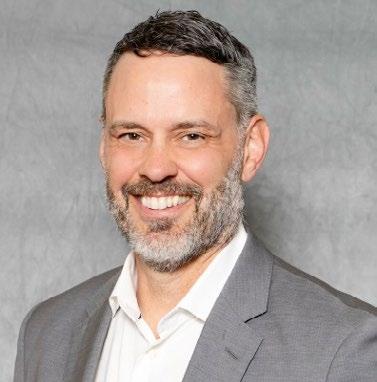
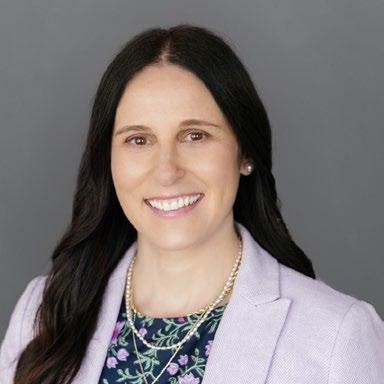



By Steven L. Flower, Richards, Watson & Gershon
Whether building a new fire station, repairing a waterline, hiring an auditor, or buying paperclips, special districts regularly face the question: Do we need to bid this contract? Sometimes bidding is legally required, sometimes it is a best practice, and sometimes it creates more problems than it solves. The key is recognizing which approach applies.
Competitive bidding exists to protect the public trust. Courts have long emphasized that bidding discourages favoritism, prevents fraud, and fosters competition that lowers costs. By publishing a notice, collecting sealed bids, and awarding to the lowest responsible bidder, districts help ensure contracts are awarded openly and fairly.
Formal bidding typically begins with a public notice and bid package describing the project, specifications, and contract terms. Interested contractors must submit sealed bids by the deadline.
The contract must then be awarded to the lowest responsive and responsible bidder. “Responsive” means the bid meets the requirements in the solicitation. “Responsible” refers to the bidder’s qualifications and reputation. Minor errors may be waived, but material defects can require disqualification. Disputes sometimes result in bid protests, and in uncertain cases the safest course might be to reject all bids and start over.
The formal bidding process is very similar across agencies throughout the state; especially for “public works”—i.e., construction, alteration, demolition, installation, or repair work. The specific threshold at which bidding is required for such contracts can vary widely, however. To cite but two examples; the minimum bidding threshold for municipal utility districts is $2,000 (Pub. Cont. Code § 20192), but the minimum threshold for municipal water districts is $35,000 (Pub. Cont. Code § 20640). Due to the many agency-specific statutes, it is essential that each district knows which thresholds apply to its own operations.
Competitive bidding serves important goals, but it can be slow or ill-suited for certain projects. California law therefore provides several alternatives and exceptions, including the following:
• The Uniform Public Construction Cost Accounting Act (Pub. Cont. Code § 22000 et seq.) allows districts that choose to be subject to the Act to use higher thresholds and simplified procedures. Formal bidding is required only for projects over $220,000, with informal or negotiated processes allowed for smaller amounts.
• Design-build allows an agency to award a single contract for both design and construction, awarded on “best value” rather than low bid. This can streamline delivery but requires more upfront work and reduces design control. Recent statutes have greatly expanded the availability of this option for special districts.
• Professional service contracts for architecture, engineering, legal, financial, and similar services are selected based on qualifications, not the lowest bid. Many agencies still use RFPs or RFQs, though state law does not require them.
State law requires every local agency to adopt procurement policies. Well-drafted policies do more than ensure compliance—they provide clarity and efficiency. District policies should distinguish between procedures for different types of contracts; establish clear dollar thresholds for bidding and approval; and anticipate exceptions and guide staff on protests or contingencies.
Do we need to bid this contract? Sometimes bidding is legally required, sometimes it is a best practice, and sometimes it creates more problems than it solves. The key is recognizing which approach applies.
• Cooperative purchasing allows districts to “piggyback” on competitively awarded contracts from other agencies.
• Emergency contracting without bidding may be allowed when sudden threats to health, safety, or essential services arise. Statutes typically require a supermajority board finding and regular review until the emergency passes.
• Maintenance work is generally exempt from bidding, but districts may need to carefully distinguish between maintenance work and repair work.
Policies are not selfexecuting, however. Staff and decision makers should be trained on how to implement the policy and the districts should periodically review and update their policies to reflect changes in law or district practice.
Competitive bidding safeguards the public interest, but it is not always required—or practical. With clear policies, proper training, and an understanding of exceptions, districts can balance compliance with flexibility and ensure public funds are spent wisely.
Questions Appear in CSDA Online Communities
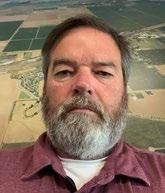
Do any districts offer a payment to anyone if they opt out of their districts health benefits? If they do, what percent of the cost of benefits do they pay them? Thank You!
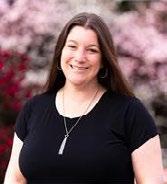
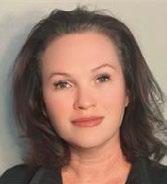

Engage with your peers and ask questions on CSDA’s Open Forum community!
https://www.csda.net/communities-home
We did a salary survey a little over a year ago and learned that we are one of the few districts still offering it in our area. It’s something that the represented employees negotiated years ago. We offer a flat amount of $725 a month as a “cafeteria benefit.” The employee that wishes to opt out is required to have dental and vision through the District, and to prove that they have medical insurance outside of the District before we will process it.
I have quite a few clients that offer Health in Lieu benefits for employees. Most agencies I have seen offer 50% of the premium. Please keep in mind Health-in-Lieu benefit pay outs DO have to be included in regular rate of pay for overtime calculation.
I asked the RGS HR group. From the initial responses I want to share: This is a fairly common benefit in public agencies, (RGS has a version for our employees). It can be very cumbersome to administrate, HR has to continually verify that all EEs had coverage & that the coverage was comparable to the agency’s. Some agencies pay up to the same as the benefits would cost as the district plan, others have a cap at another amount, which can be much smaller.
CSDA Disclaimer: This section is not intended to be legal advice. Members should always seek legal counsel. The information contained here is for general reference purposes only.



By Vanessa Ryan, Senior Vice President and Director of Public Sector Banking, Tri Counties Bank
Securing financing for vital infrastructure projects, such as upgrading water systems or modernizing essential services, presents a complex challenge for special districts. Agencies frequently face a sophisticated financial landscape where access to public bond markets may be prohibitively costly or restricted to financial institutions handling projects over $50 million. While local banks can provide more accessible financing options, their capacity and expertise may at times be limited.
Instead of waiting for markets to shape the financing narrative, public agencies can take initiative by equipping themselves with relevant information to find solutions that align with their long-term objectives.
Although the public bond market offers advantages such as long-term repayment benefits and reduced interest
costs, it is generally more suitable for larger-scale projects. Moreover, this funding route presents several challenges, including higher issuance costs due to the necessity of obtaining a credit rating and extensive disclosures, which collectively drive up project costs. Additionally, ensuring project sustainability can be particularly challenging for agencies with limited staffing. For smaller or midsized projects, private placement bank loans may offer a more efficient and cost-effective alternative. These loans eliminate the need for a credit rating, allow for expedited approval processes, and provide flexible structuring with customized terms, including tax-exempt financing, reduced issuance costs, flexible call provisions, and relationshipbased pricing.
Regardless of which path seems attractive on the surface, securing the right financial solution hinges on asking the right questions.
When working with a financial partner, it is important to address six key areas to ensure the financing solutions proposed align with both the organization’s immediate need and long-term strategic goals:
1. What is the repayment horizon? Understanding the anticipated timeline for accessing bond or loan proceeds is crucial.
2. How will repayment be structured? Will a dedicated revenue stream be pledged? Are there existing obligations to consider? When was the last rate study conducted?
3. Is the financing affordable? A thorough review of audited financials, current budgets, and capital improvement plans is essential to assess whether the agency can sustain the proposed financing.
4. Are there legal risks? Pending litigation or regulatory concerns could impact financing eligibility.
5. Does the agency have a debt management policy? Confirm whether the board has approved seeking financing. Check if legal counsel has been consulted to ensure compliance with indebtedness regulations.
6. Are there any existing or upcoming projects that necessitate financing? It is essential to assess current debt obligations and identify any anticipated future projects that will require funding.
These six questions form the basis for developing a proactive and comprehensive financing strategy. By
providing detailed information about your agency’s mission and operational context, your financial partner can offer timely and customized financing solutions.
A successful financing arrangement fundamentally relies on the relationship between the agency and its banking partner. Effective financing extends beyond mere negotiation of a transaction; it involves cultivating a partnership that aligns with the agency’s current initiatives, infrastructure requirements, and long-term objectives.
I recently worked with a water agency seeking to upgrade its metering infrastructure and two tank systems. The $7 million project initially appeared to necessitate bond financing, which would have incurred at least $250,000 in issuance fees. The agency came prepared to address the six crucial questions, resulting in a tax-exempt bank loan that offered competitive interest rates and the flexibility to prepay portions of the loan as grant funding became available. They also secured favorable relationship pricing as they maintained a full-service banking relationship with us, including deposits, loans, and treasury services.
The era of passively accepting traditional financing models is over. By educating themselves and aligning financing strategies with broader mission goals, agencies can break free from one-size-fits-all financing solutions and pave the way for infrastructure and service improvements that truly reflect their unique operational and financial needs.
The CSDA Finance Corporation is enjoying another strong start to 2025, already surpassing $100 million facilitated across 12 different transactions. Our expert team of consultants has been pairing districts with low-cost financing solutions for over 35 years and is proud to be a trusted resource for agencies across California.





AllPaid www.AllPaid.com








Actuarial Retirement Consulting, LLC www.awenarc.com
Amazon Business www.csda.net/amazon-business
California CAD Solutions (CALCAD) www.calcad.com
California CLASS www.californiaclass.com
Columbia Bank www.umpquabank.com
Utility Cost Management, LLC www.utilitycostmanagement.com

CPS HR Consulting www.cpshr.us
CSDA Finance Corporation www.csdafinance.net
Enterprise Mobility www.enterprisemobility.com
GovDeals www.govdeals.com
Special District Risk Management Authority www.sdrma.org


Atkinson, Andelson, Loya, Ruud & Romo www.aalrr.com
Best Best & Krieger www.bbklaw.com
California Bank of Commerce www.californiabankofcommerce.com

Streamline www.getstreamline.com
VC3 www.vc3.com



Tri Counties Bank www.tcbk.com
Five Star Bank www.fivestarbank.com
Liebert Cassidy Whitmore www.lcwlegal.com
Richards Watson Gershon www.rwglaw.com
“The Clovis Veterans Memorial District is excited to take advantage of this new benefit from CSDA! While we were already using Amazon for ordering, having a no-cost business account has allowed us to make even better use of the system - from the pay-by-invoice feature to additional discounts on the items we order most often.”
Benefits include:
• Free Business Prime Membership - Fast, FREE shipping and unlimited users per account
• Pay by Invoice - $5,000+ line of credit
• Exclusive Discounts- Save up to 25% off thousands of essential items
California Special Districts Association members now have access to new benefits with Amazon Business, including free Business Prime (up to a $3,499 value).
Amazon Business provides the selection, convenience, and value customers have come to know and love from Amazon, with solutions designed to meet the needs of CSDA members.
Brown Armstrong Accountancy Corporation www.bacpas.com
CalTRUST www.caltrust.org
Centric Business Solutions
www.centricabusinesssolutions.com
Cole Huber LLP www.colehuber.com
Complete Paperless Solutions www.cps247.com
Easeworks
www.easeworks.com
Energy Systems Group
www.energysystemsgroup.com
Harshwal & Company LLP
www.harshwal.com
Kosmont Financial Services
www.KosmontFinancial.com
National Demographics Corporation (NDC) www.ndcresearch.com
NBS www.nbsgov.com
Nossaman, LLP www.nossaman.com
Redwood Public Law, LLP www.redwoodpubliclaw.com
River City Bank www.rivercitybank.com
SiteLogiq www.sitelogiq.com
Slovak Baron Empey Murphy & Pinkney LLP www.sbemp.com
Tyler Technologies, Inc. www.tylertech.com
Witt O’Brien’s www.wittobriens.com

Visit our website for information about how to open a new Amazon Business Account or link your existing account to your membership to start saving today!
www.csda.net/amazon-business
Special programs or discounts offered by CSDA’s Endorsed Affiliates – tailored just for CSDA members!
• Commercial Card
• Cybersecurity / IT Services
• Digital Mapping Solutions
• Financing
• GASB Reporting Compliance
• Human Resources
• Investments • Merchant Services • Online Surplus Action • Risk Management
• Utility Cost Control
• Vehicle Rentals
• Website Design Learn more online at csda.net/value-benefits







